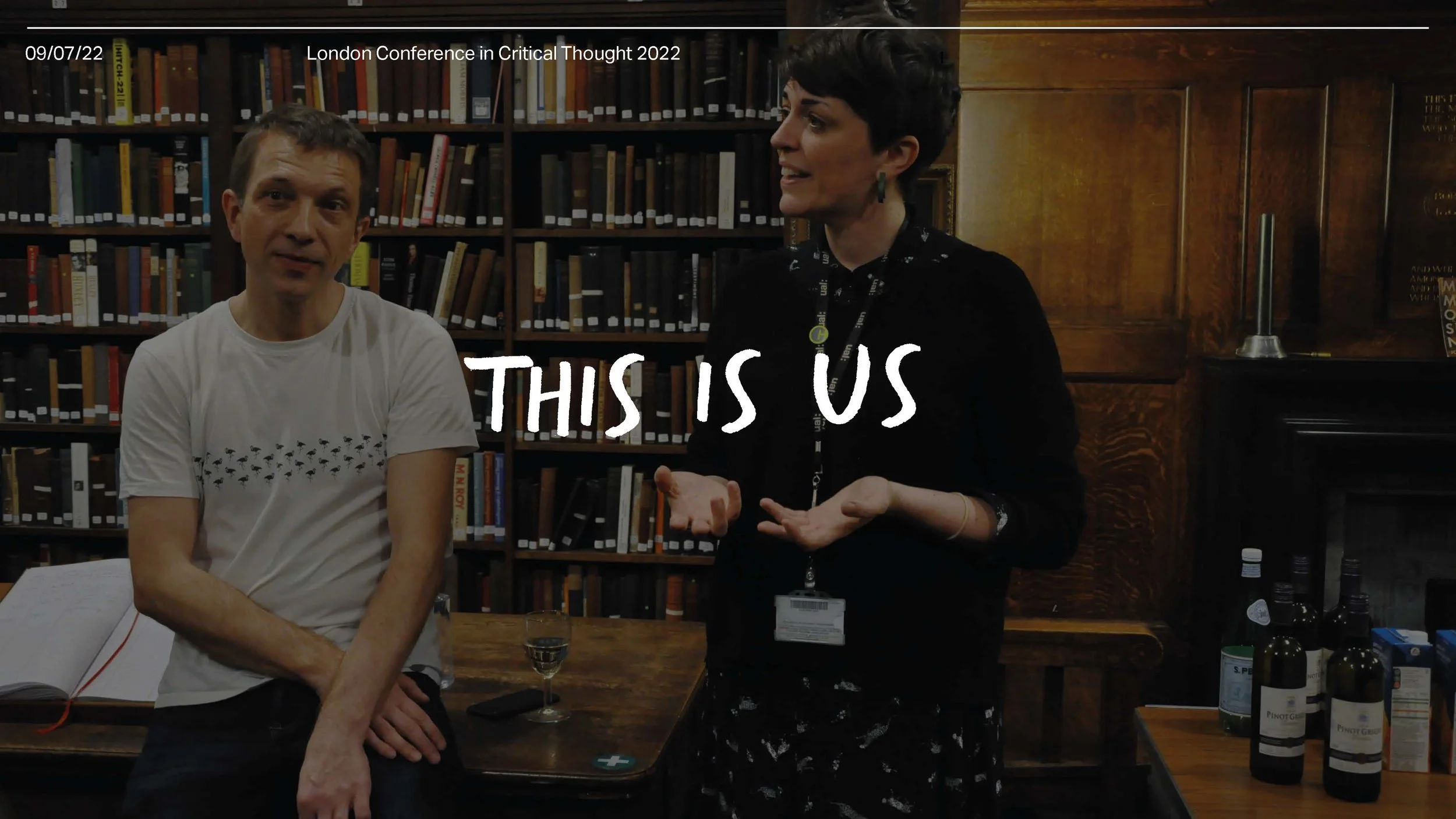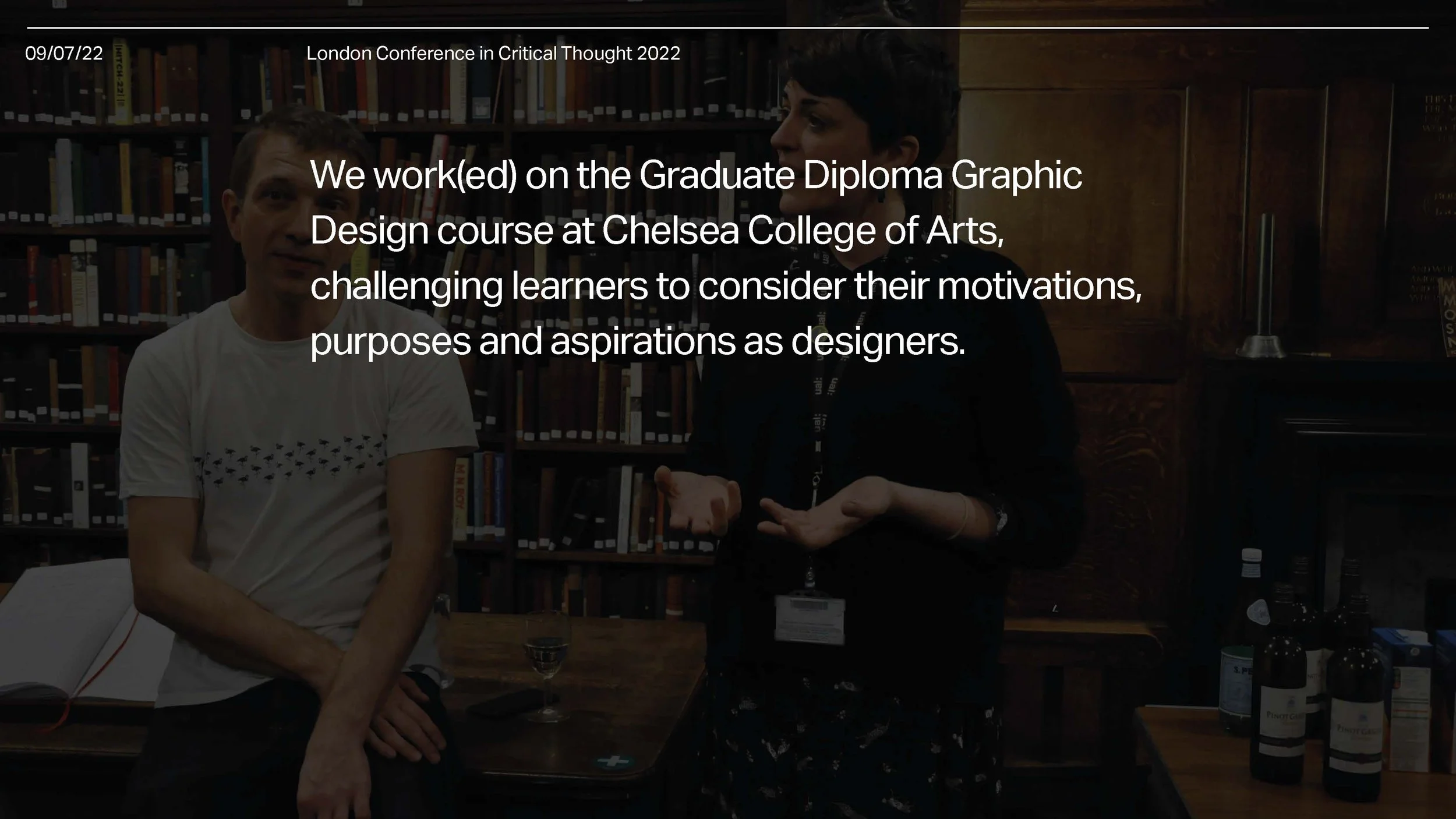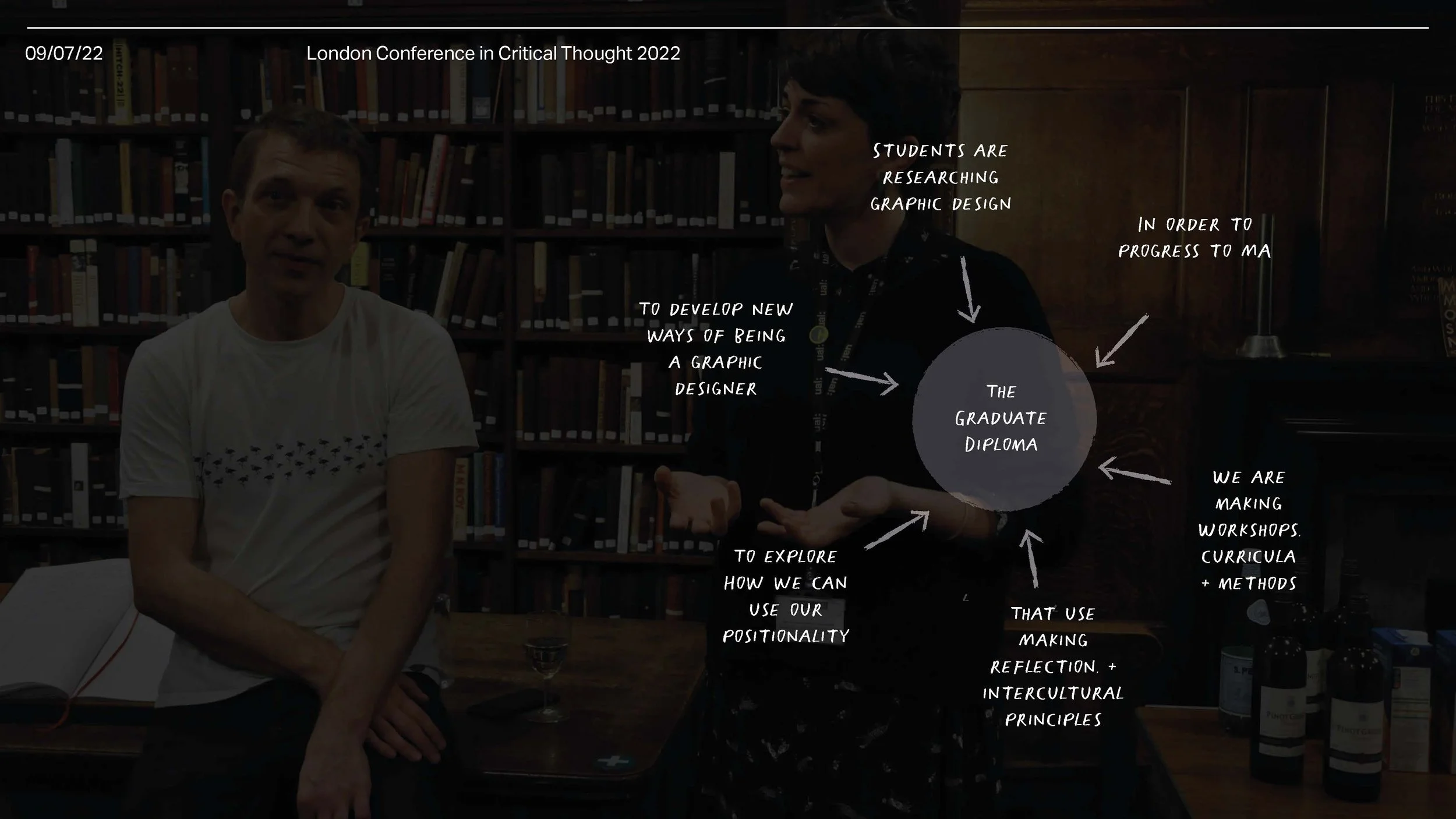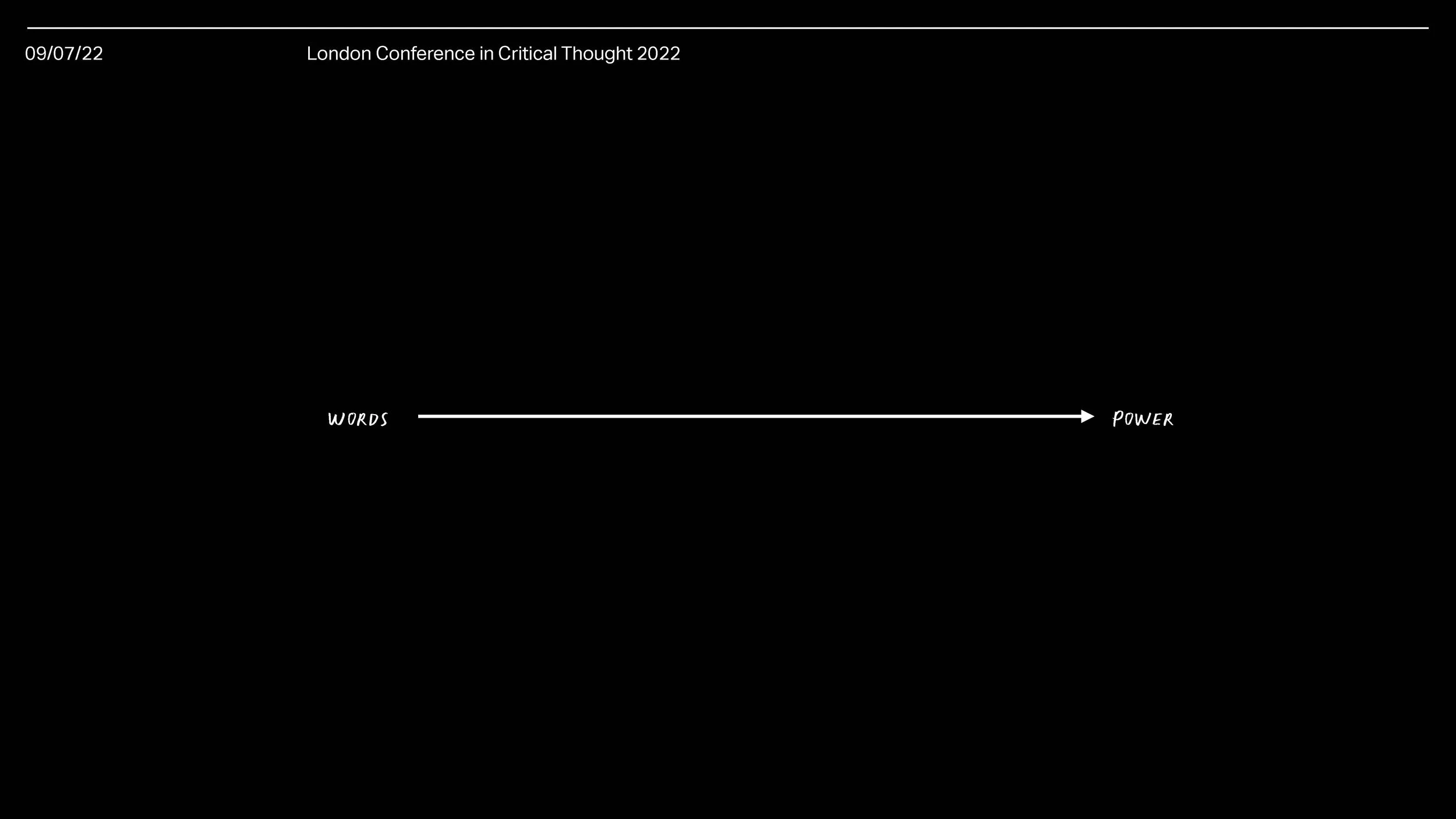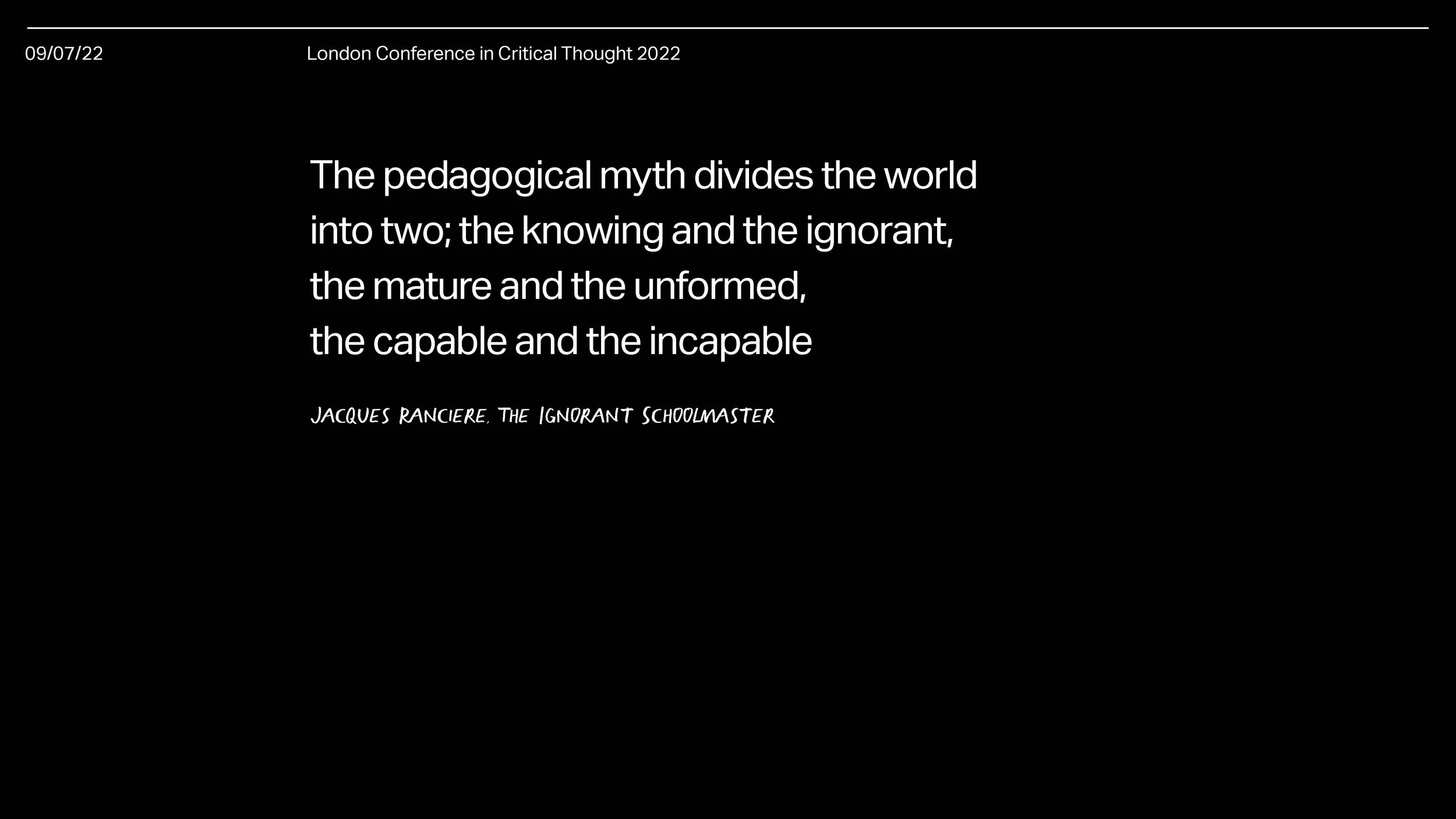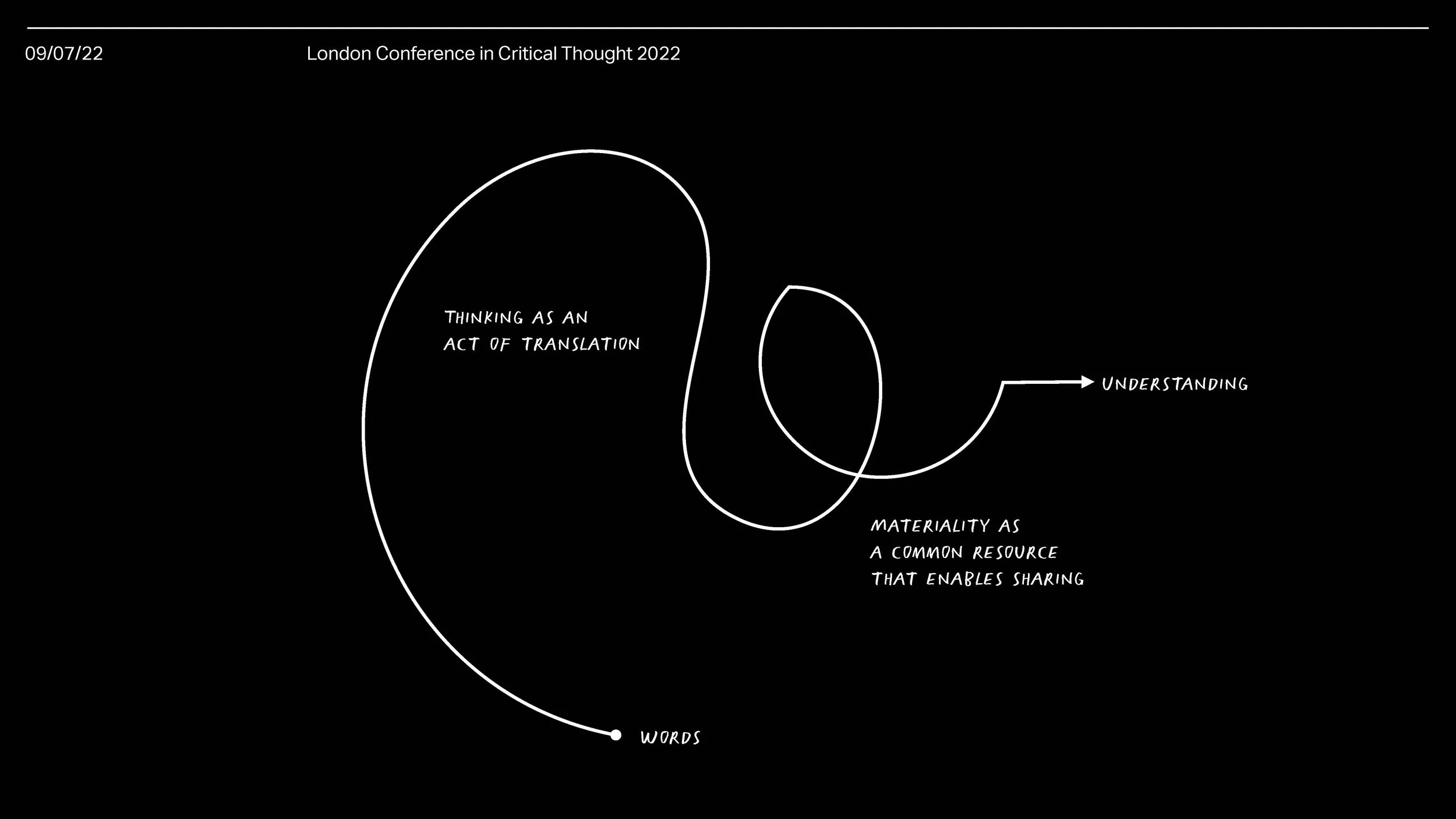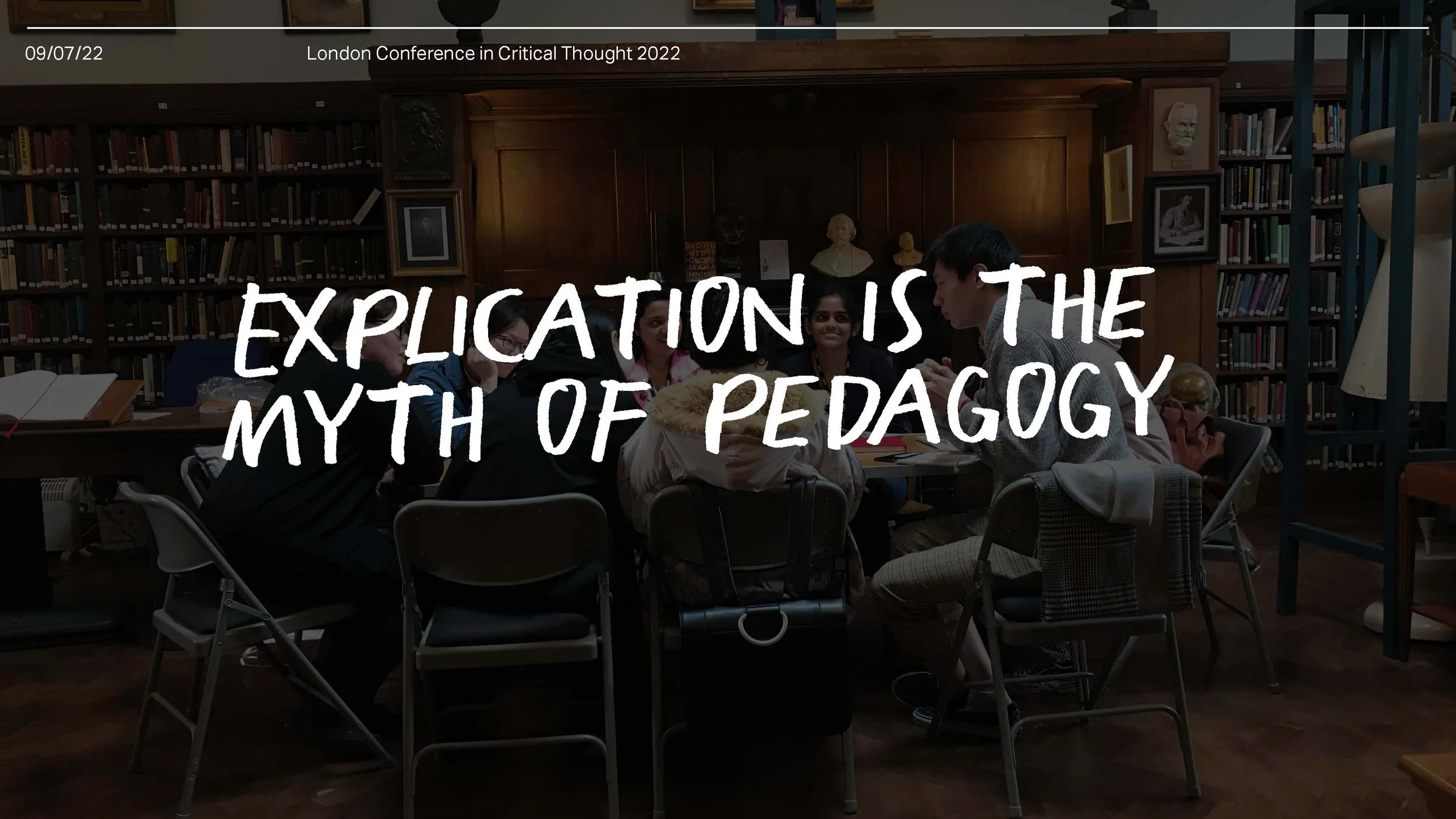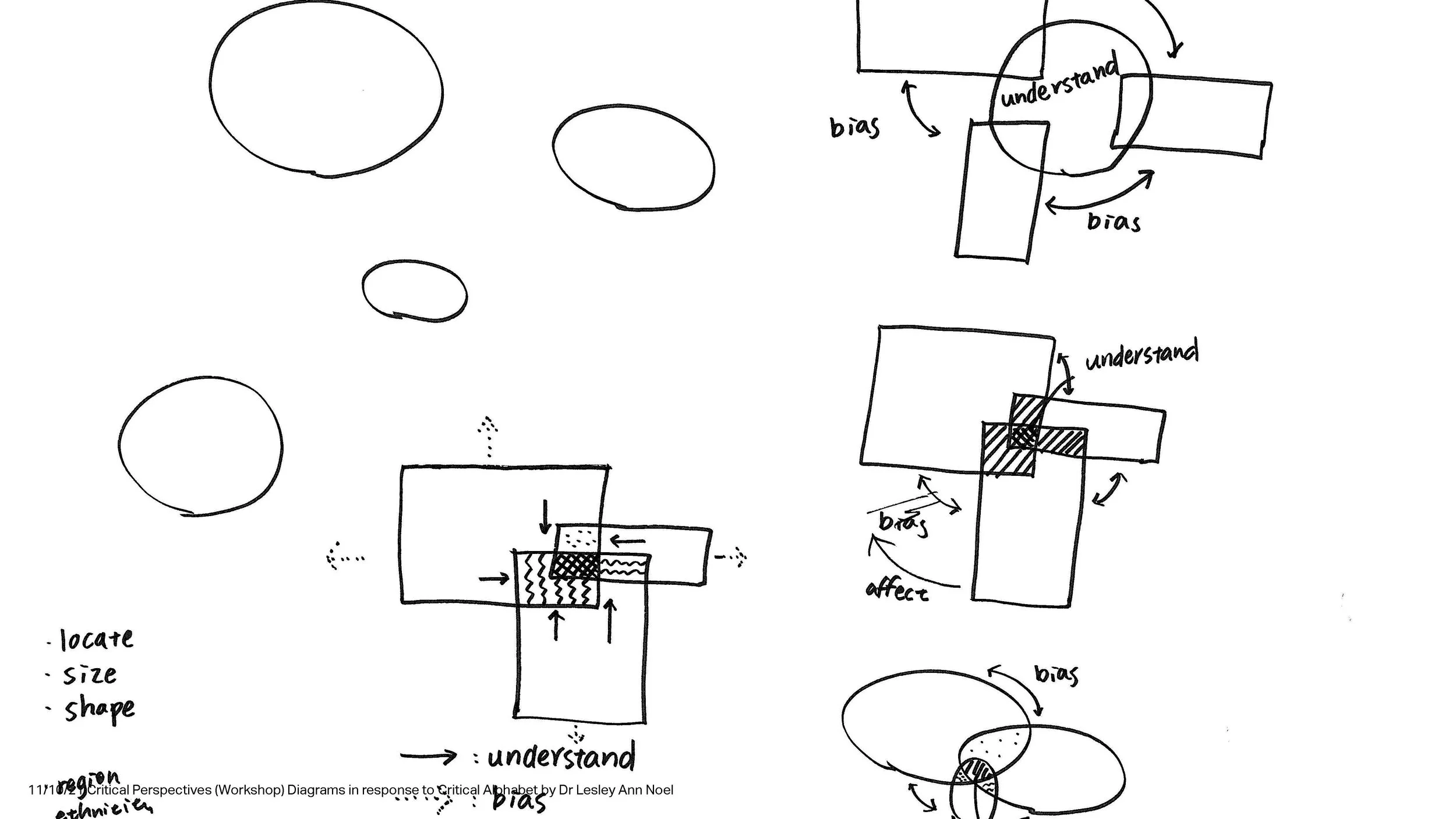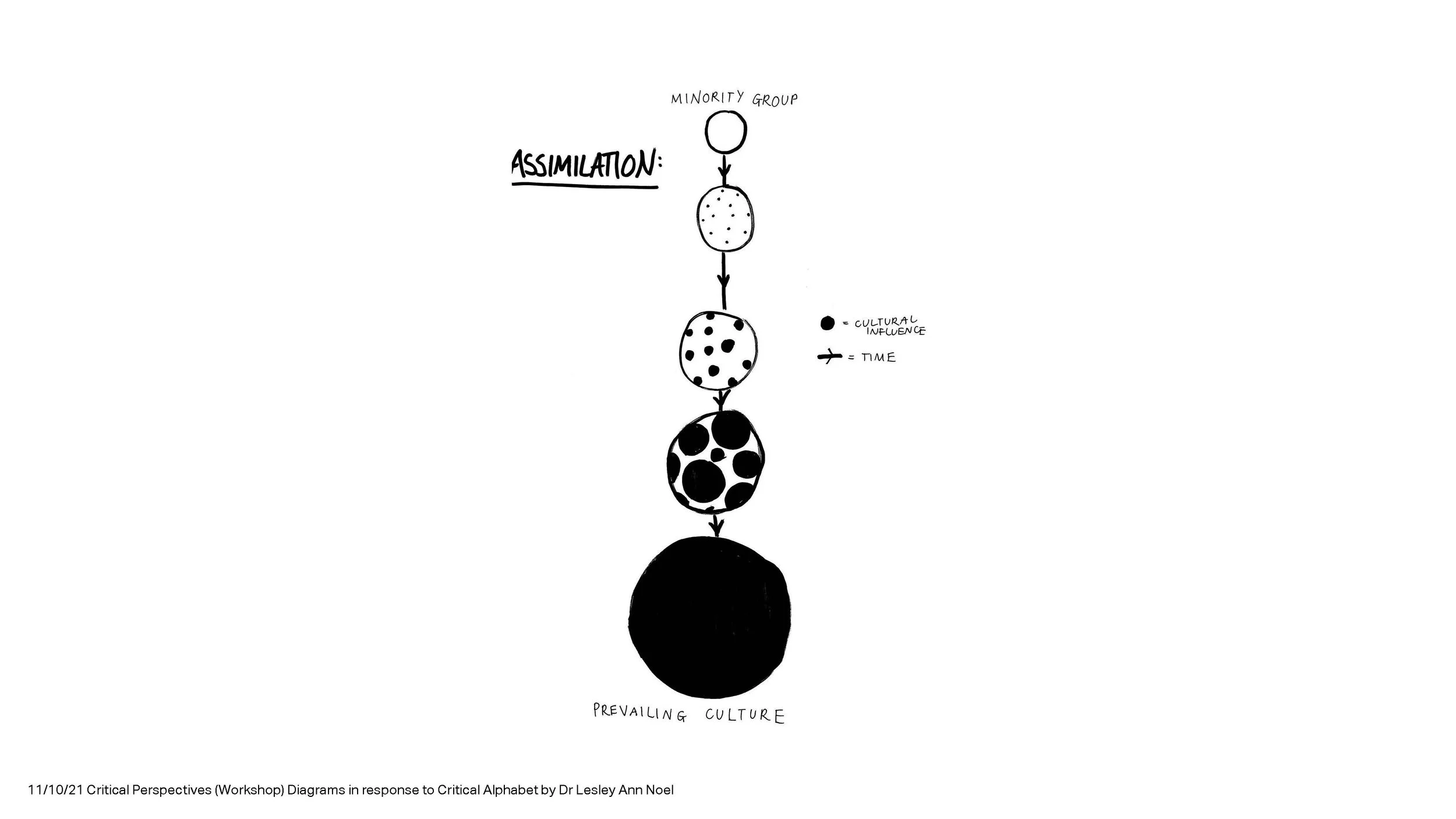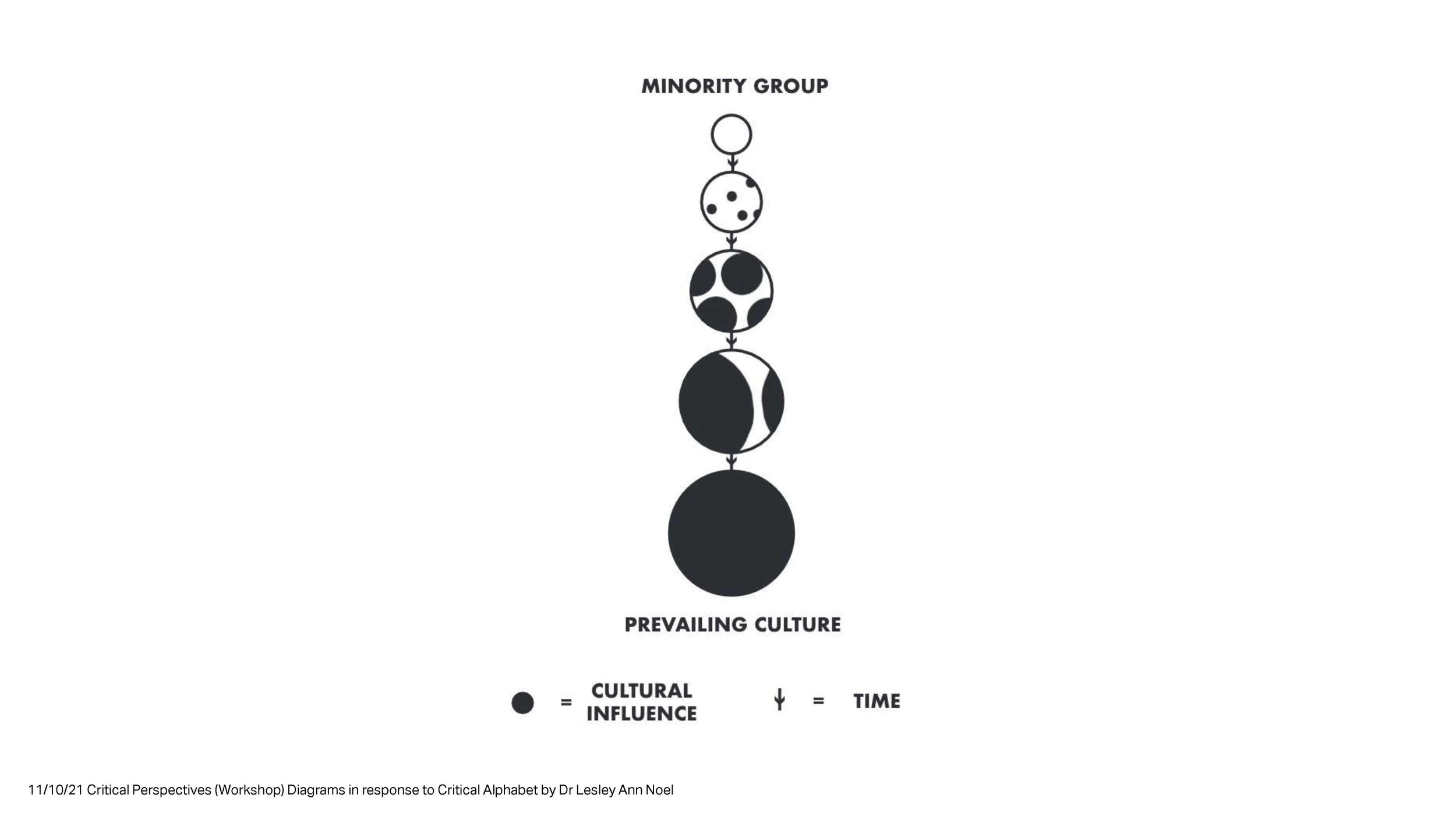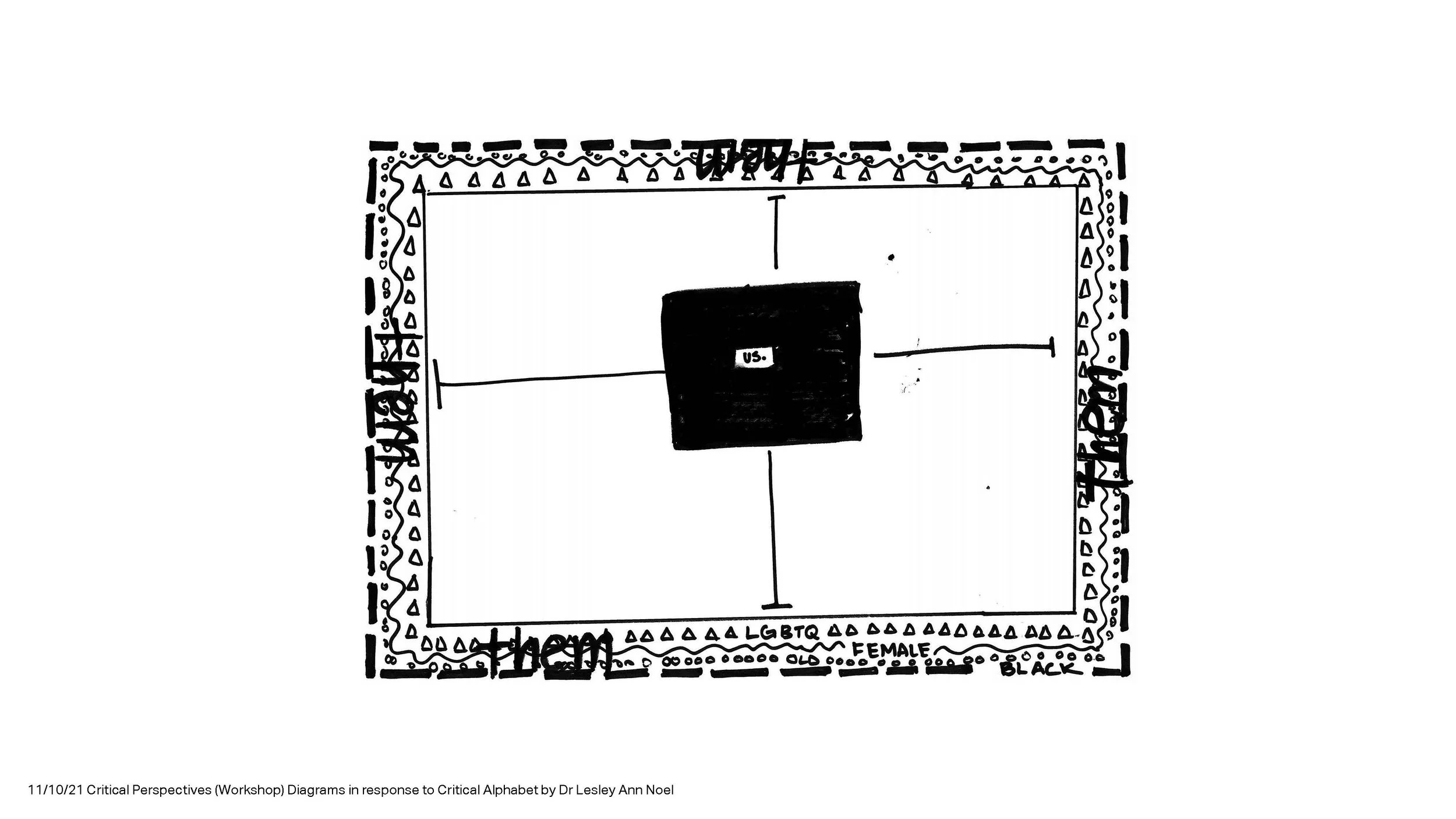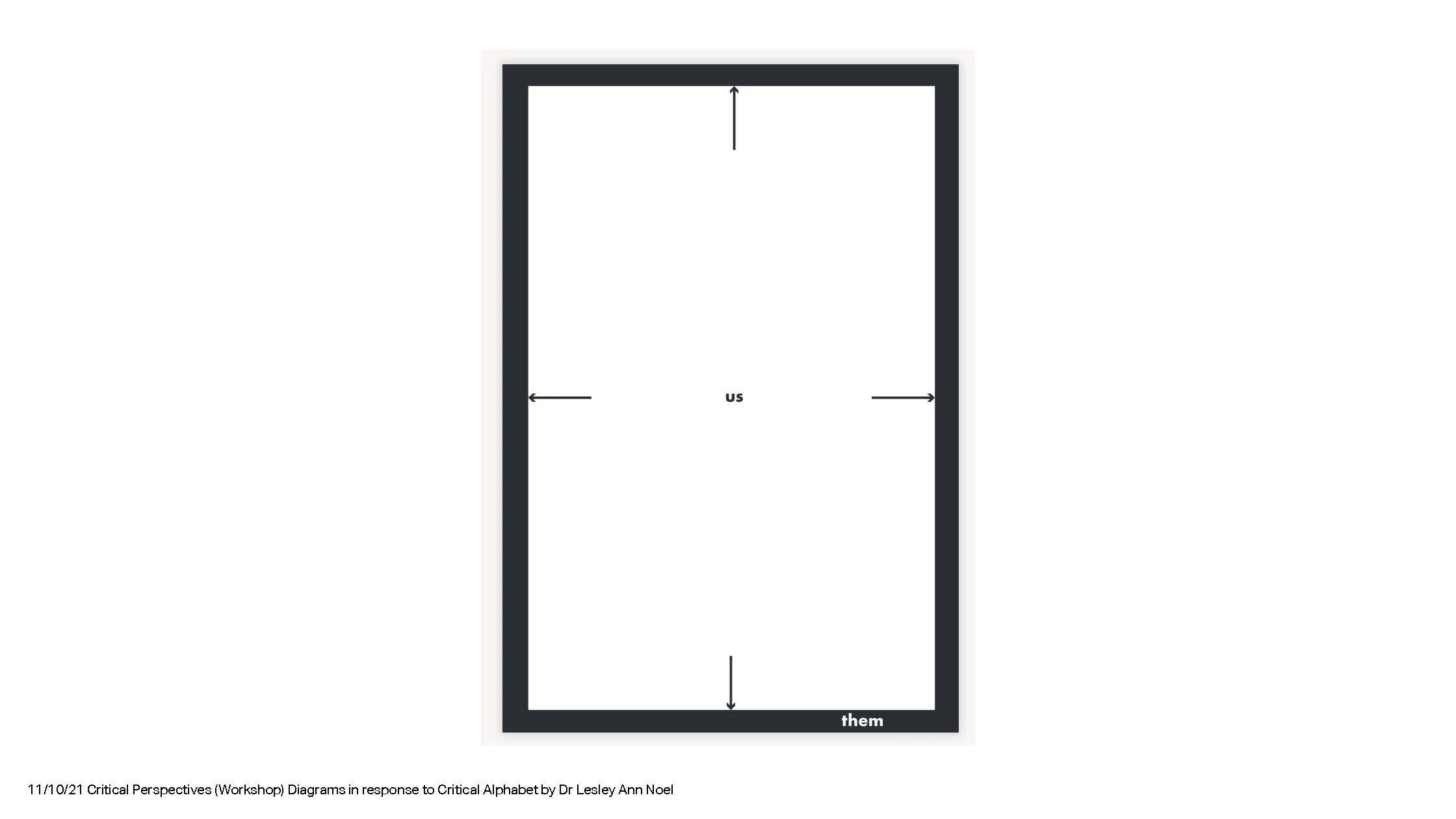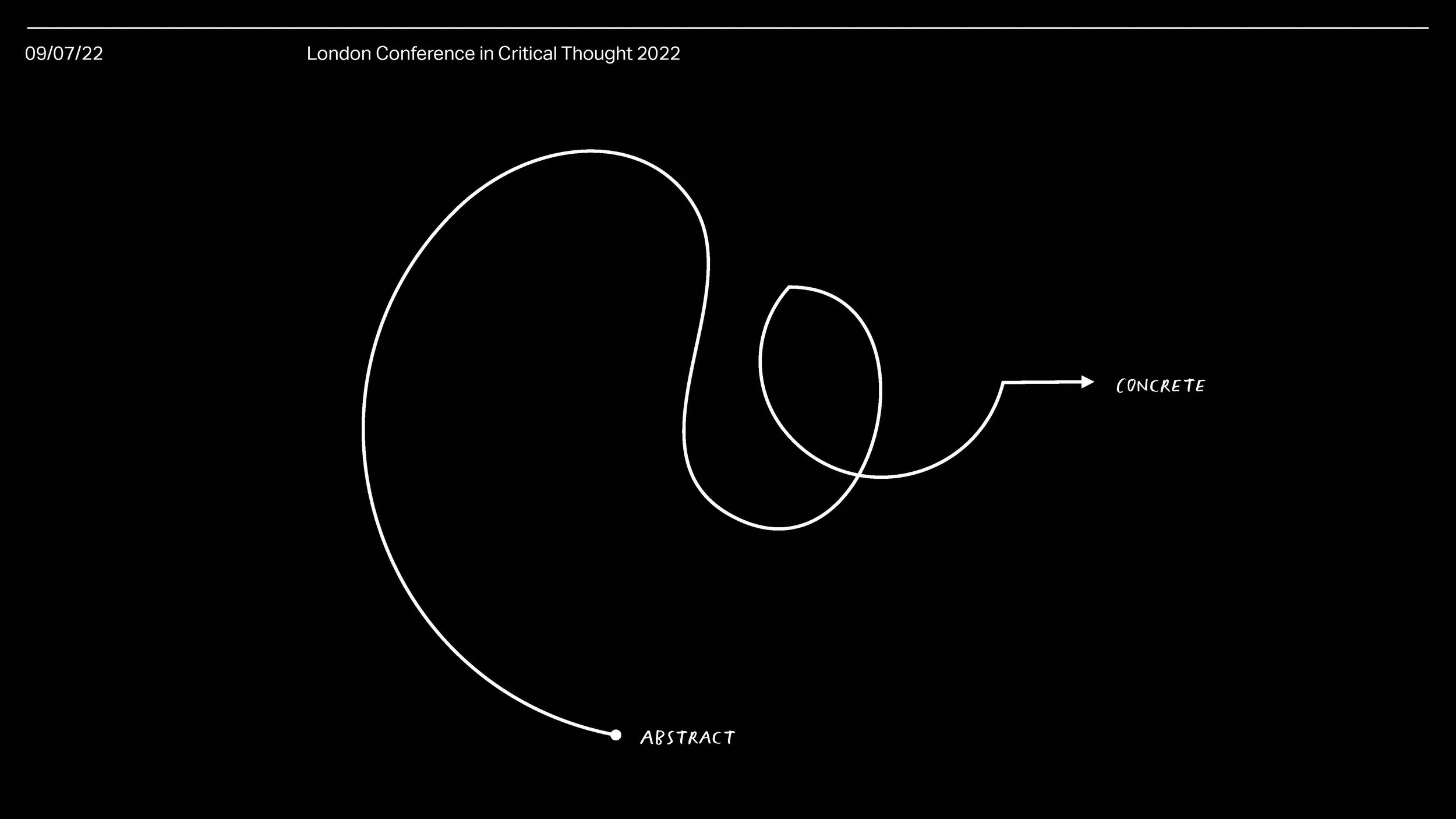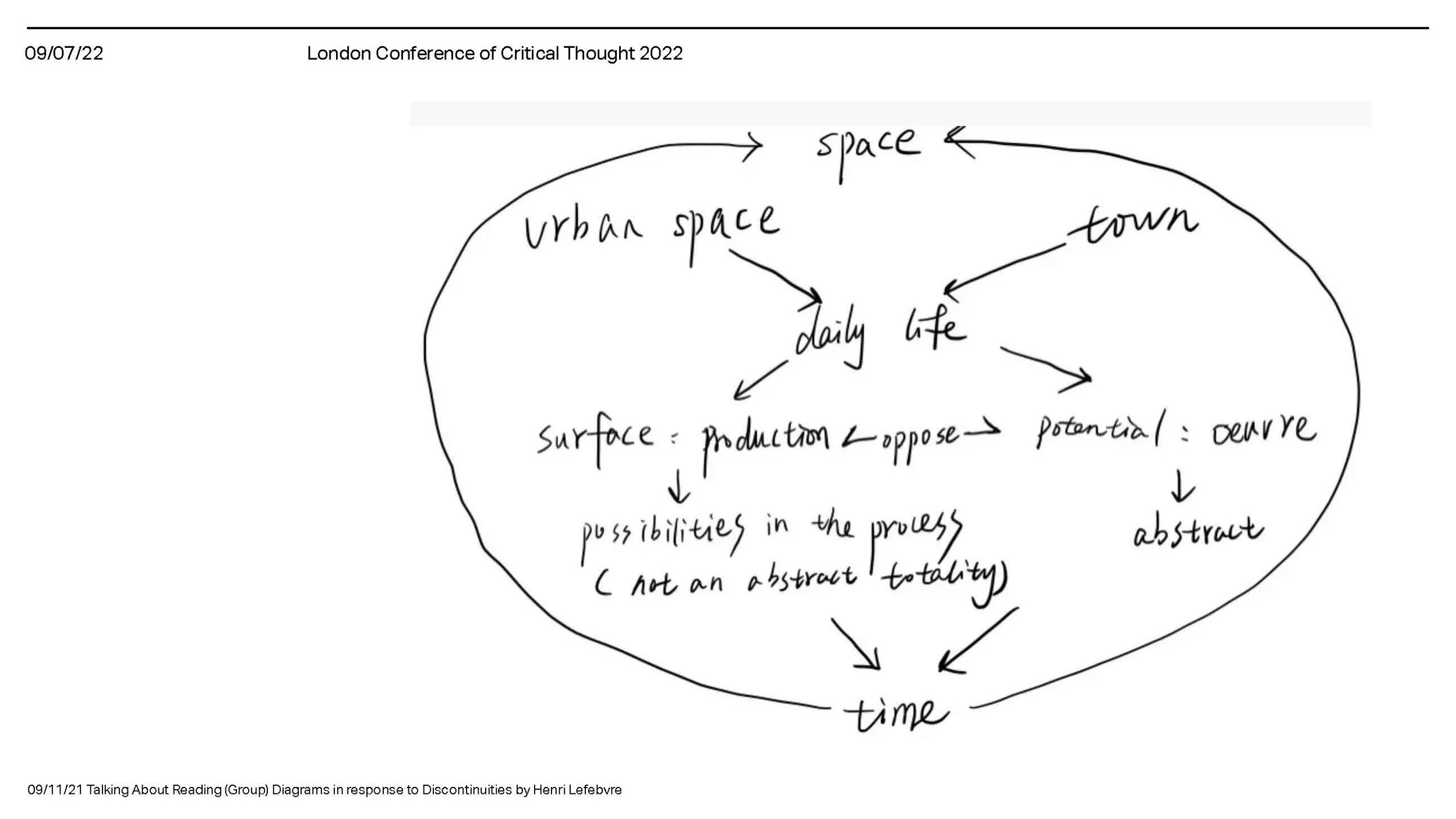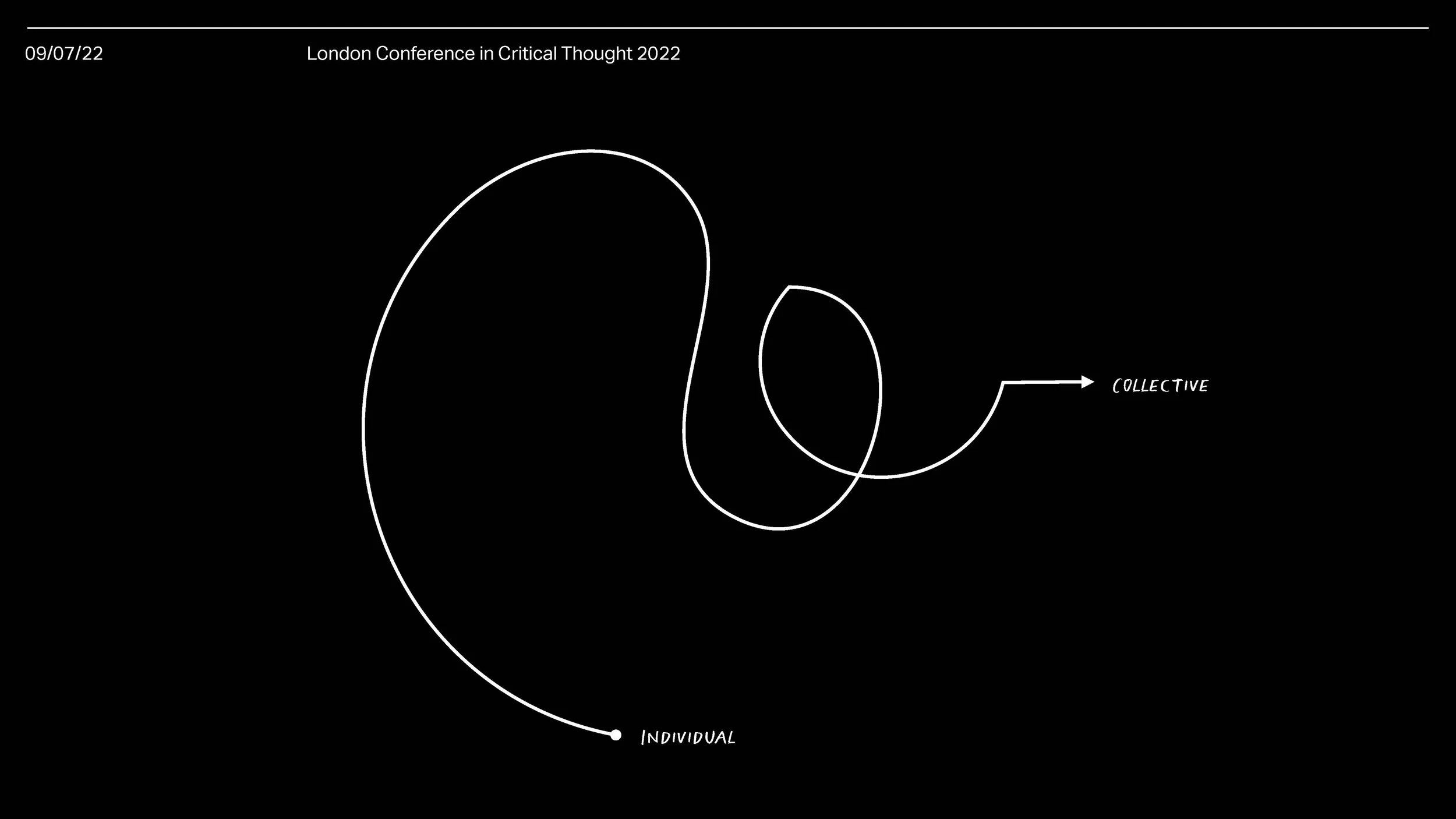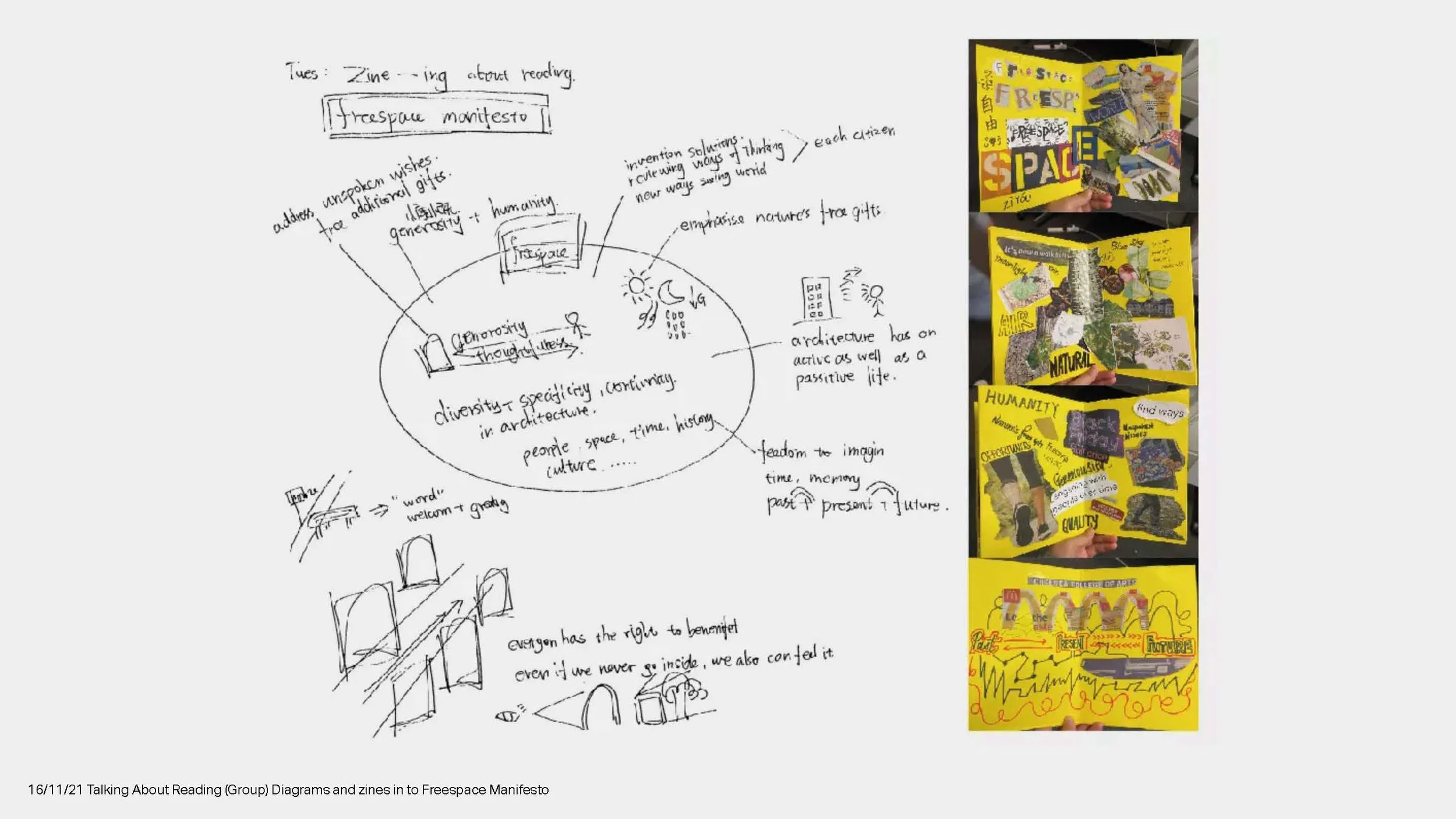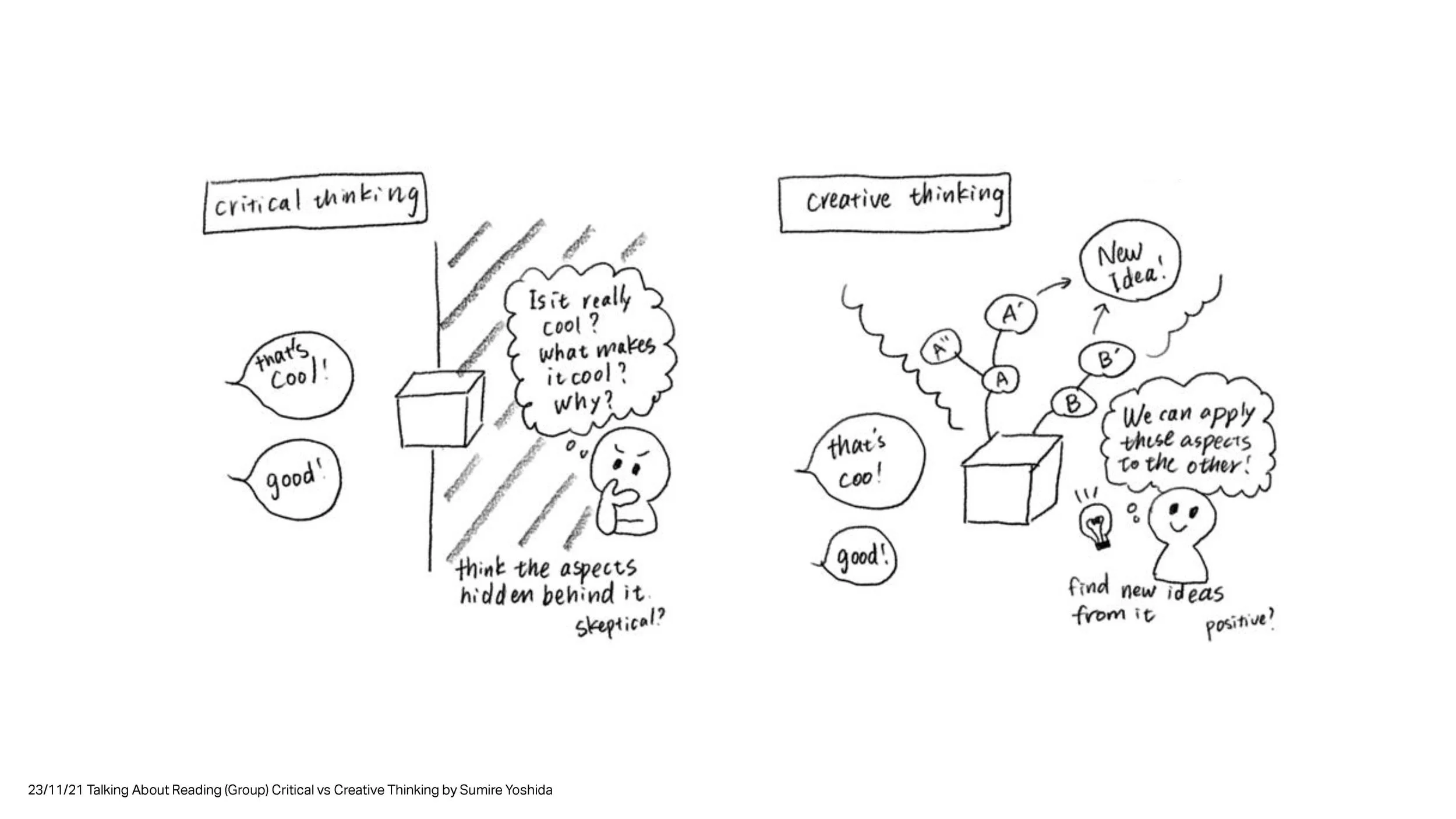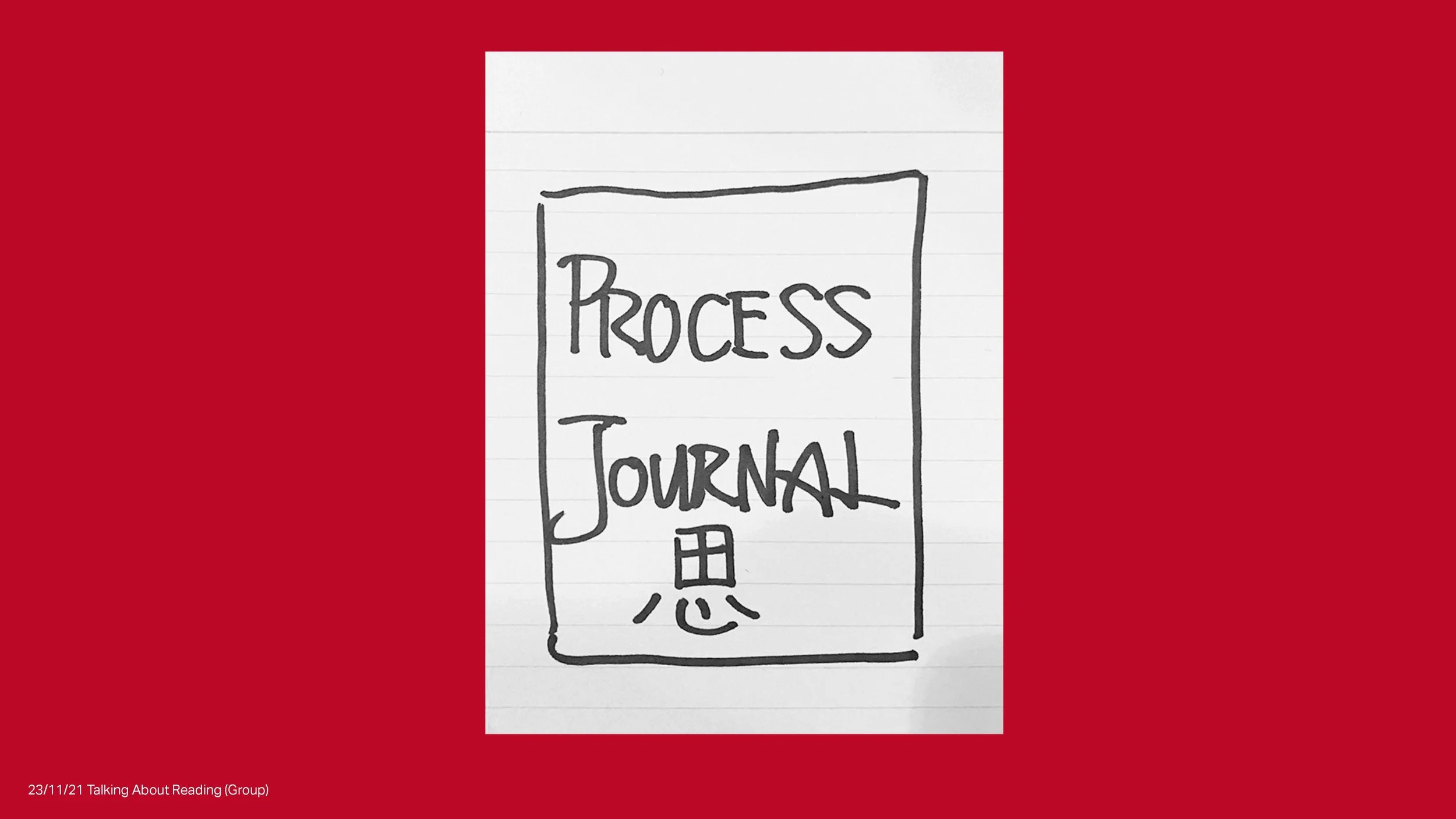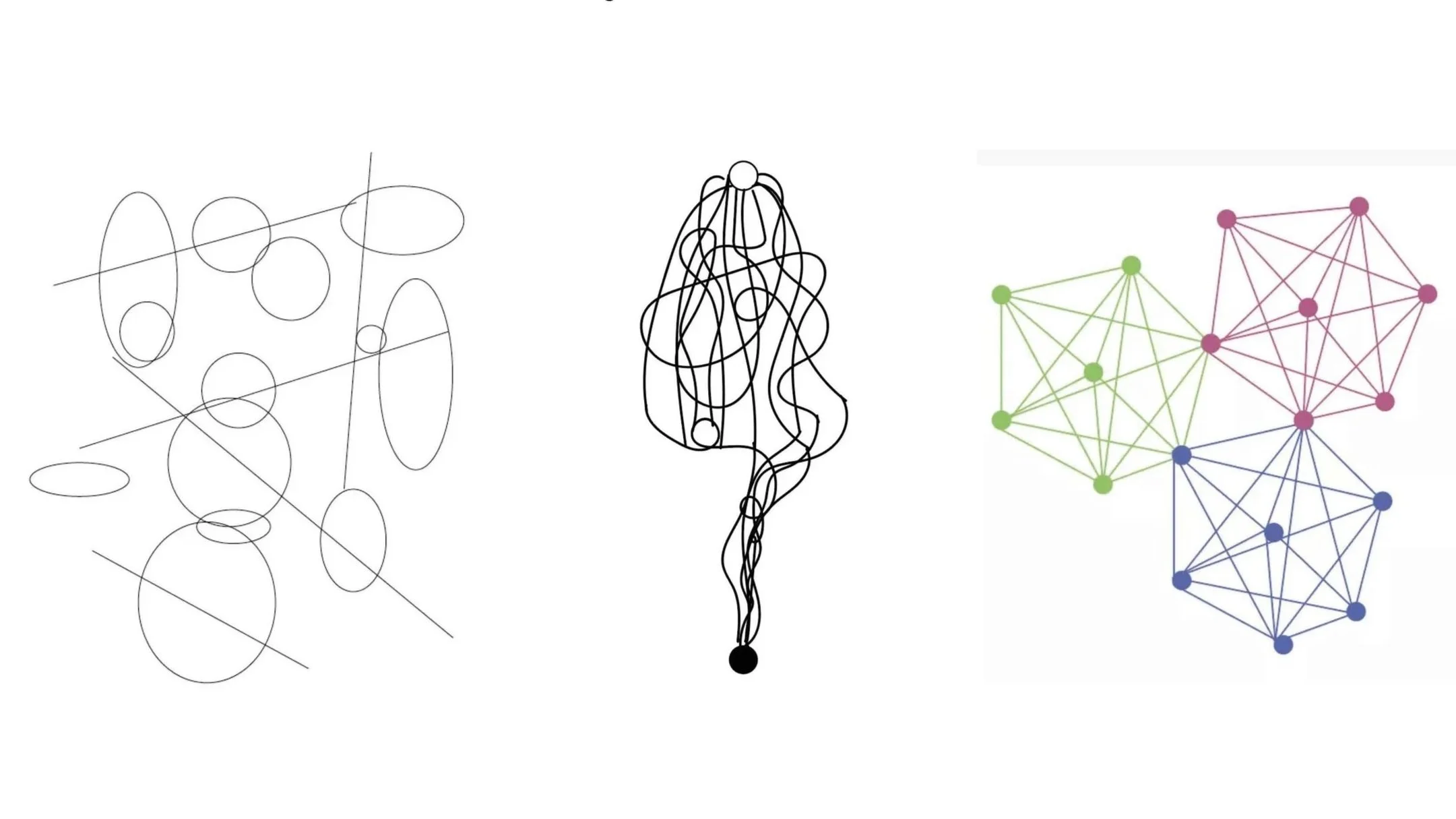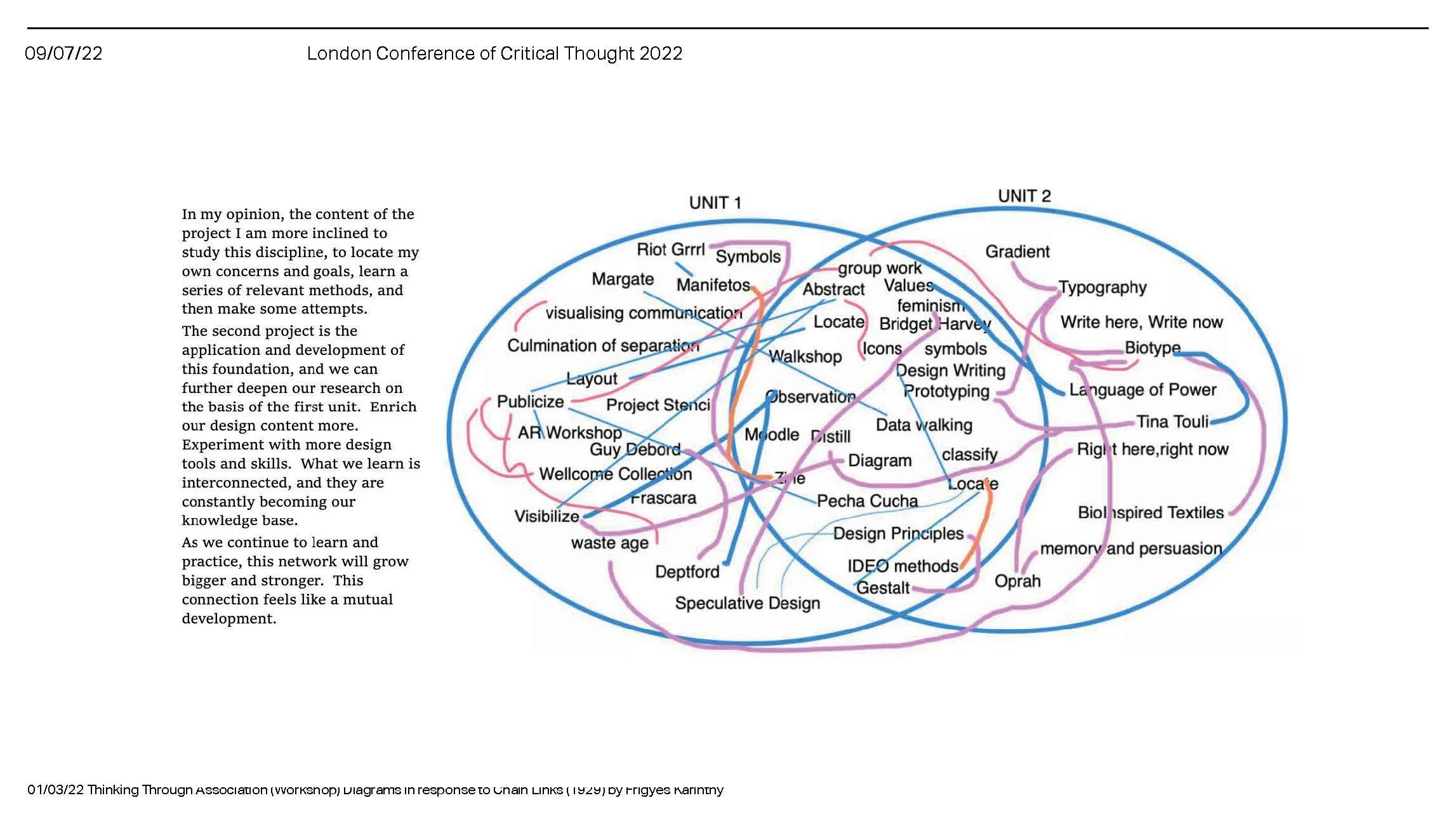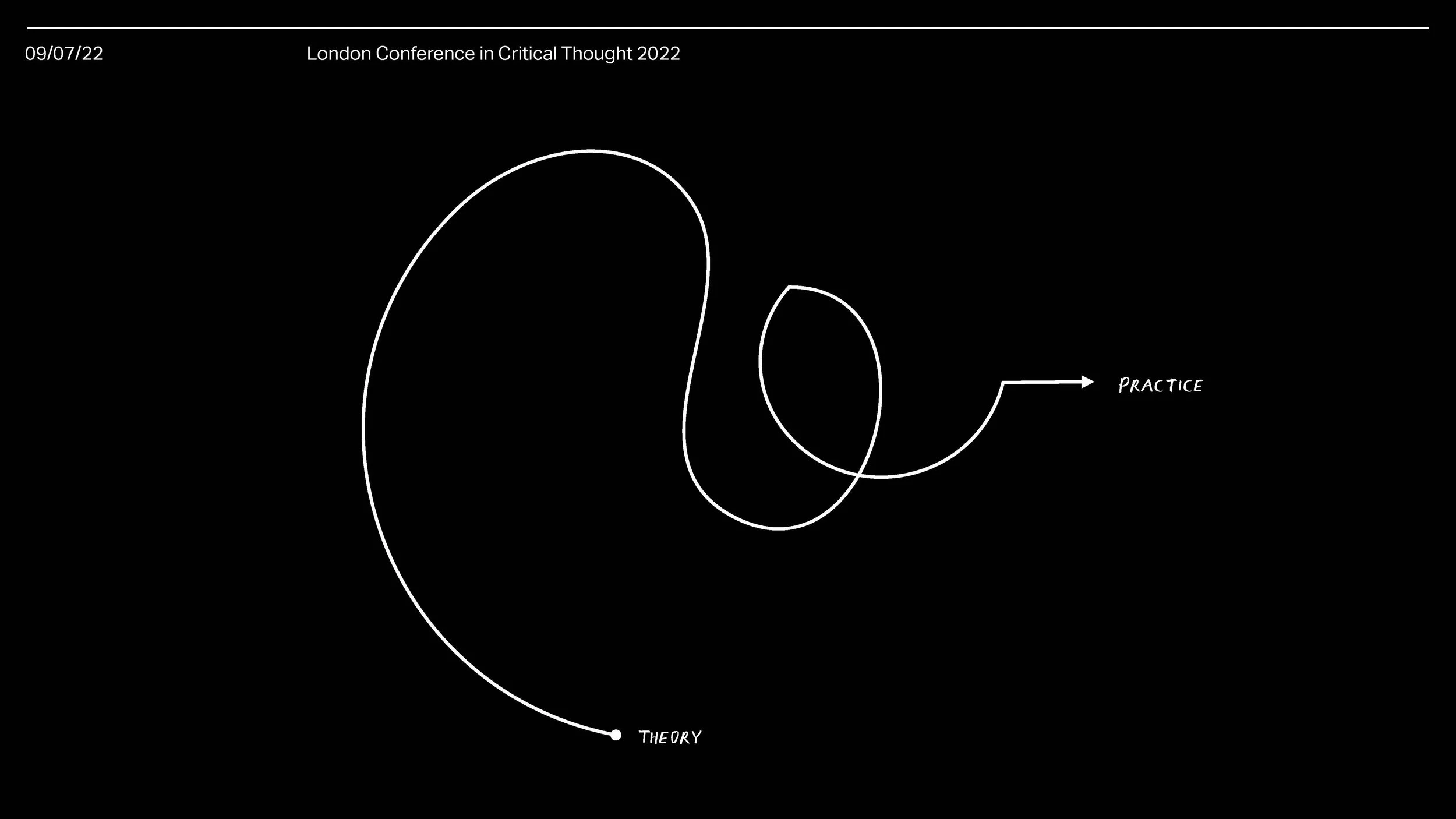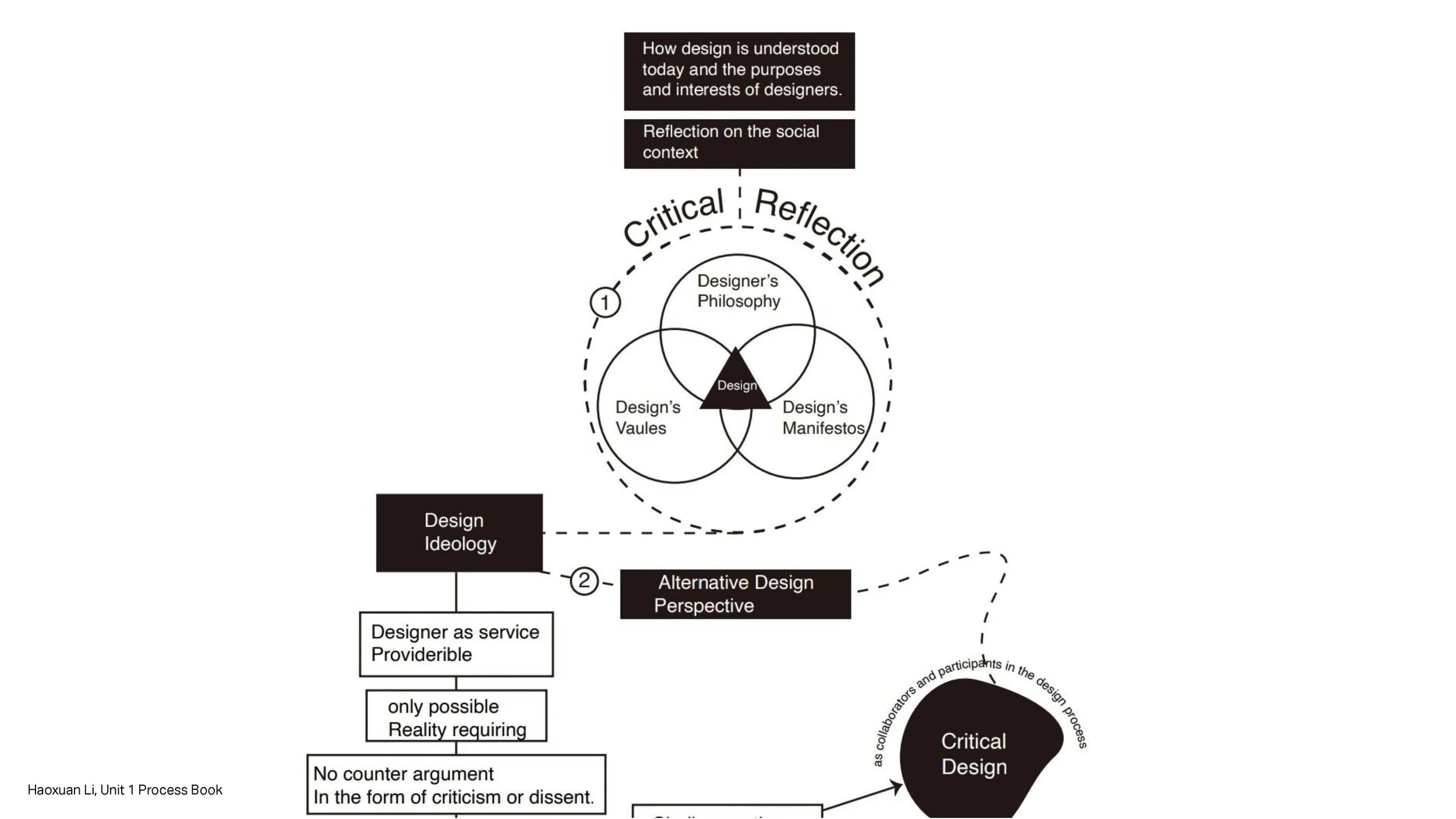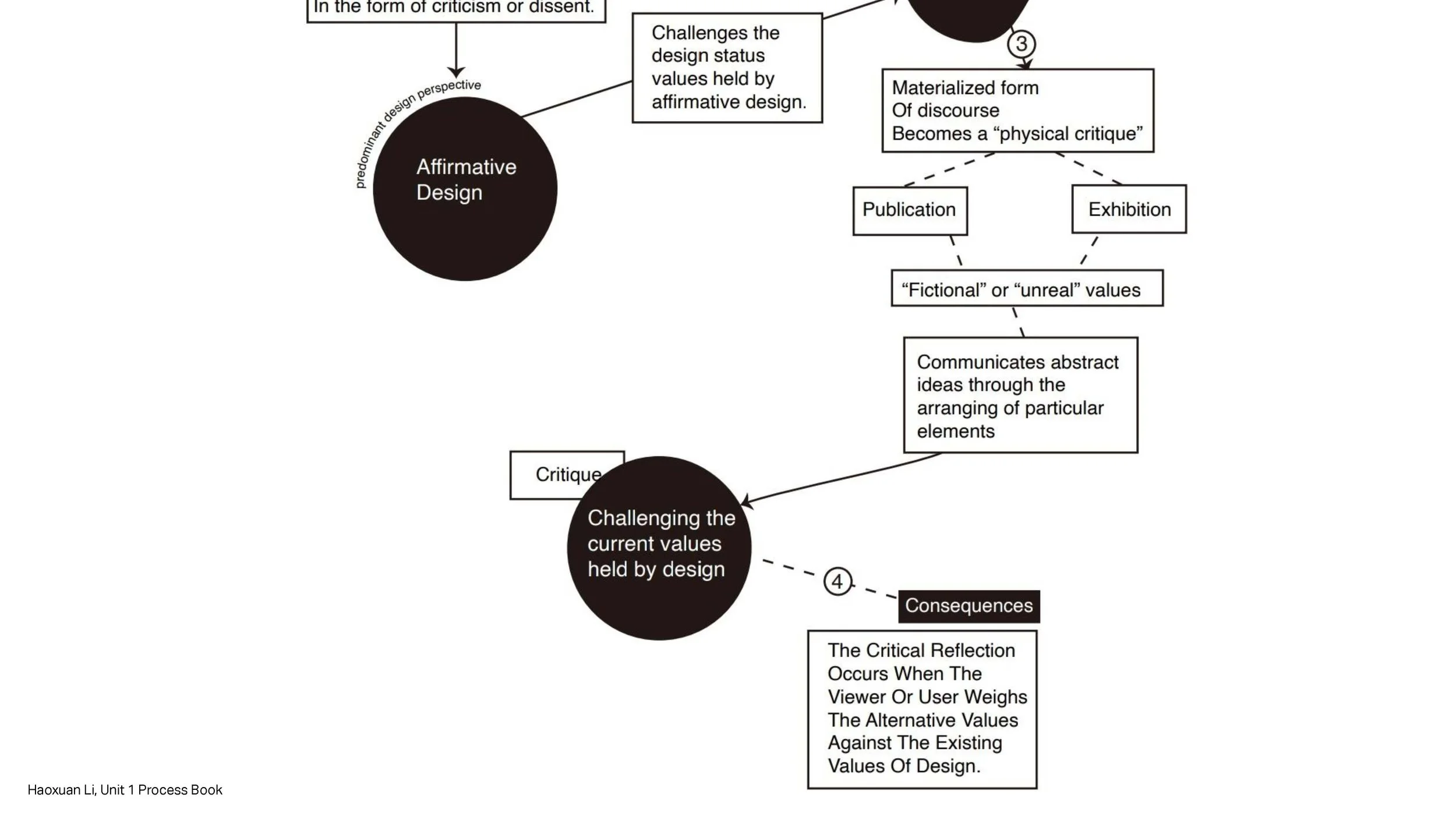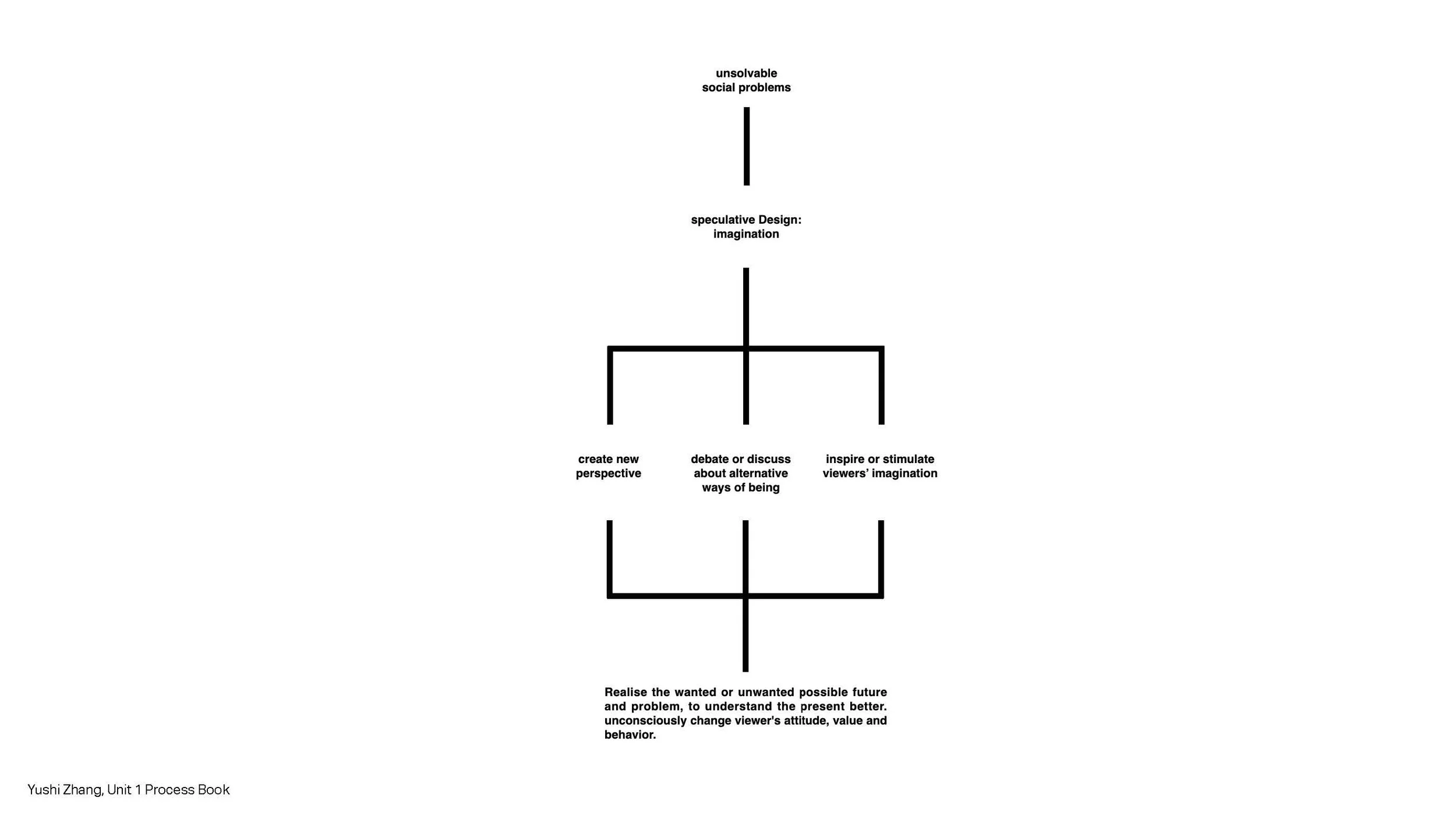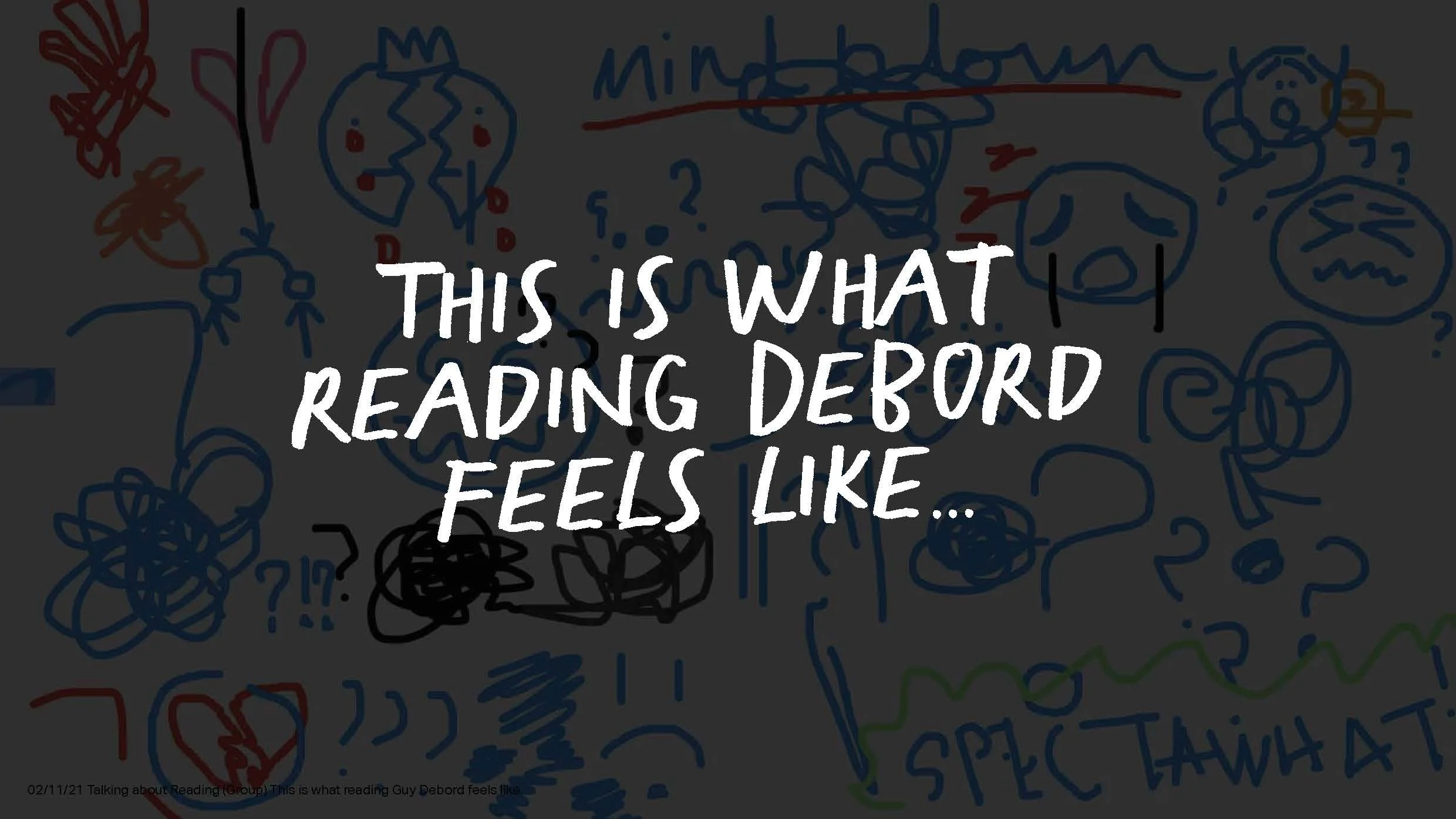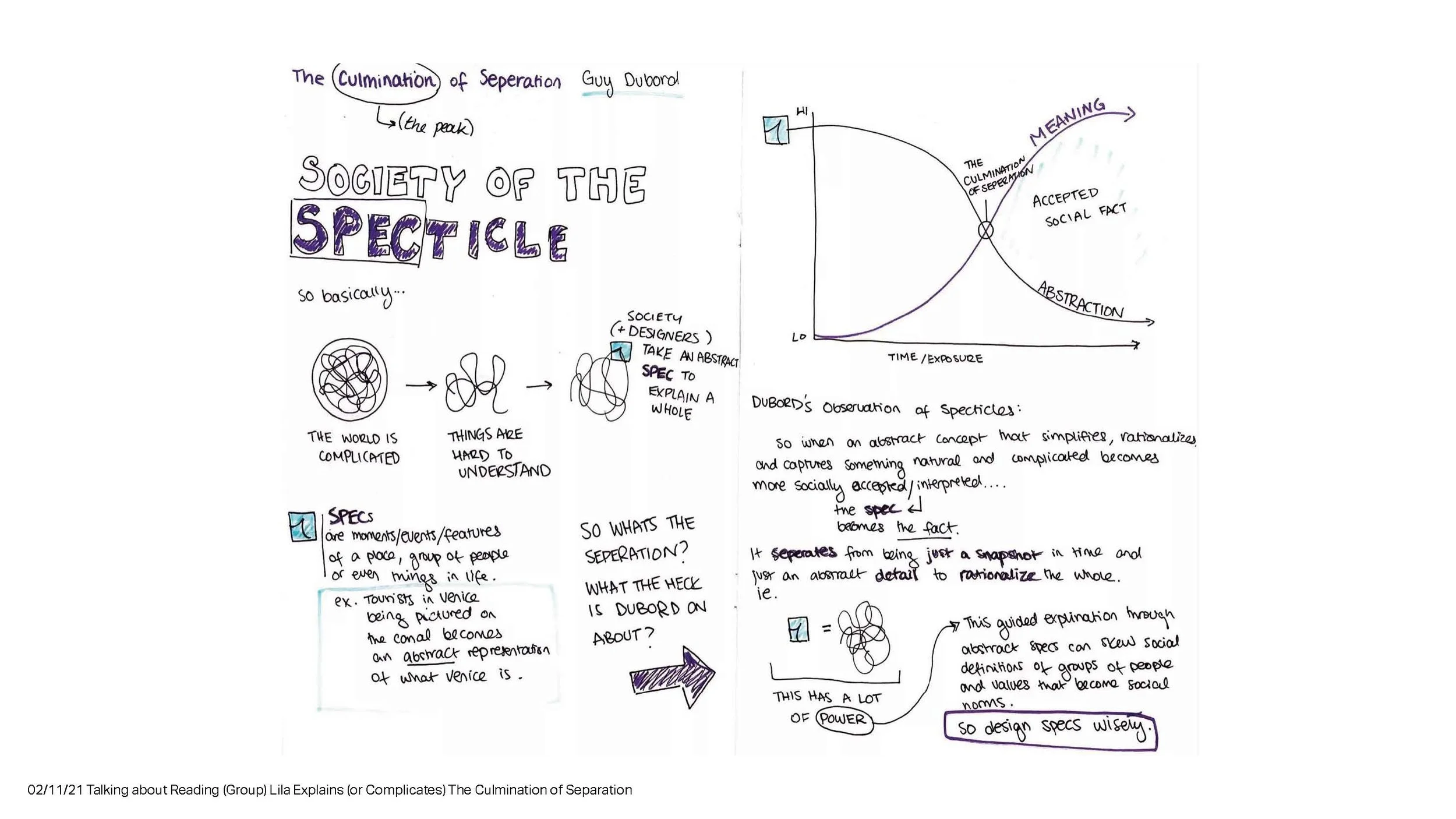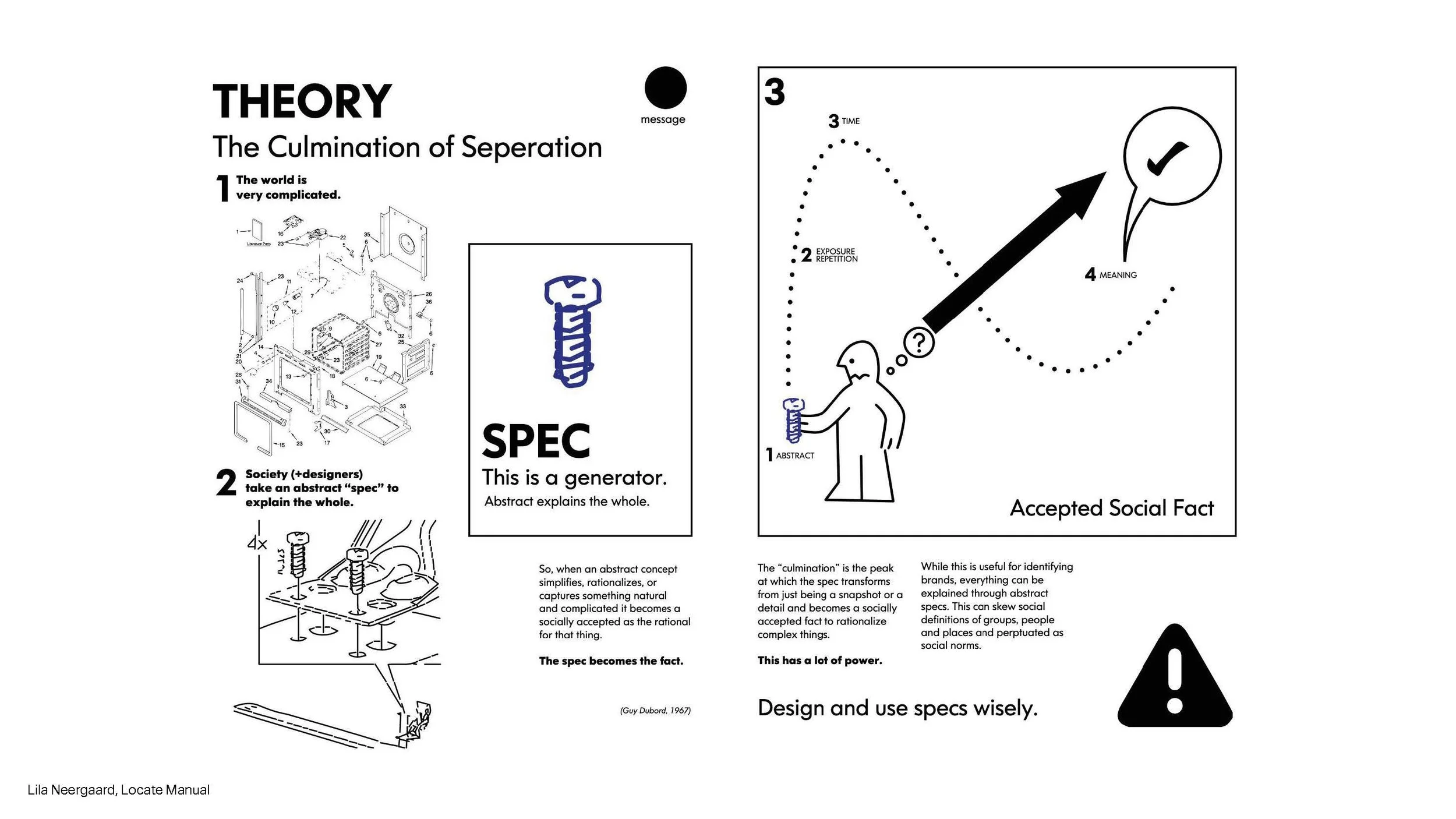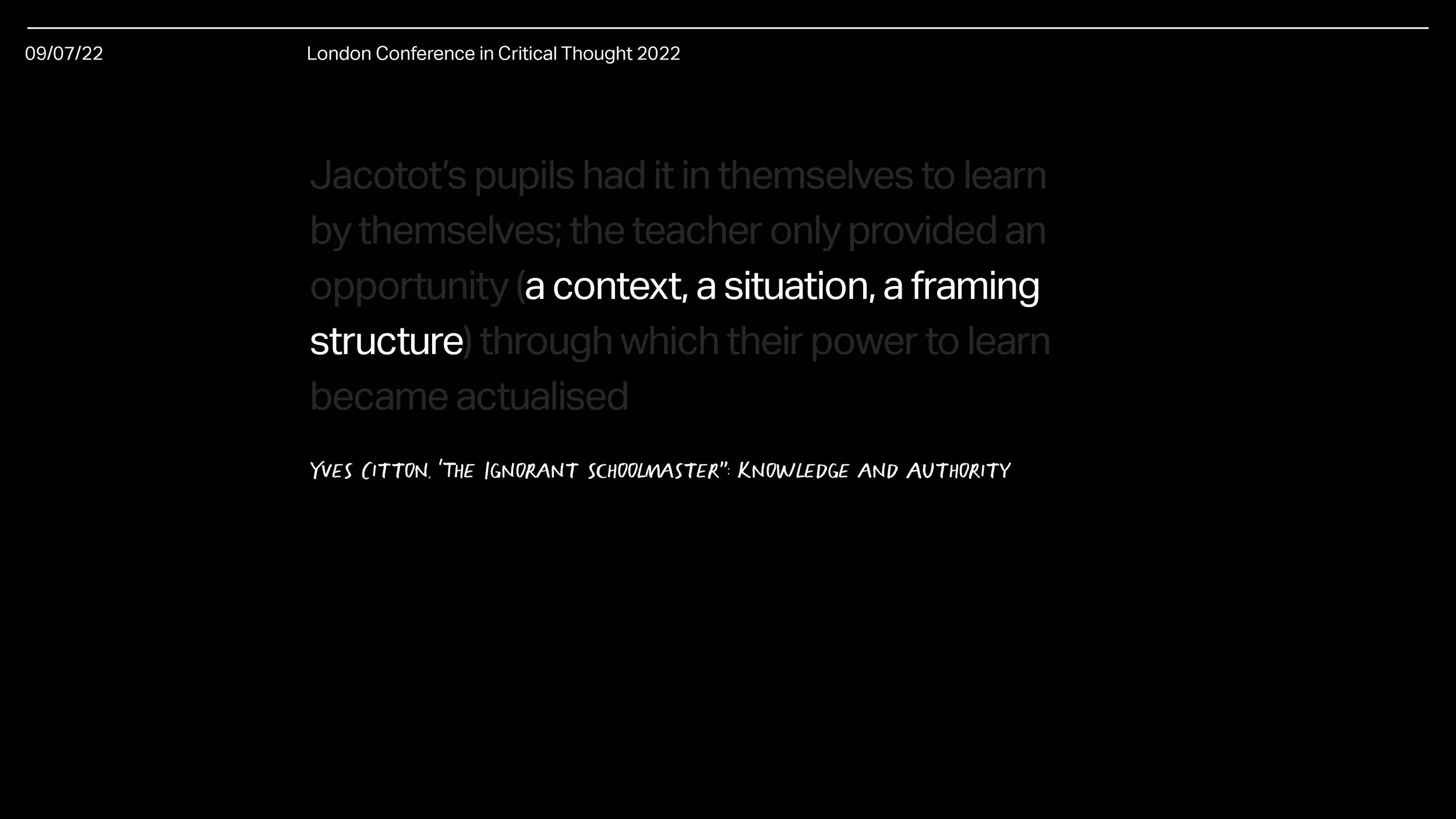Drawing on Ideas…
This week, I co-presented a session at the London Conference of Critical Thought with Adam. It was called Drawing on ideas: Diagramming to encourage critical engagement with texts and contexts in Higher Education.
(I don’t know where I picked up this this snappy title: horrendously long subtitle habit but it needs to go).
I decided to turn the presentation into a bit of a visual essay on here. Mostly as an experiment but also to give some extra context on the slides. Here we go…
So first up, this is us.
I’m the Course Leader and Adam is an Intercultural Communicaiton Practitioner at UAL. We’ve been collaborating for a couple of years now, creating opportunities to work together and Adam has become a really core part of the teaching on the course.
As we delivered this, I had just announced that I was leaving. So this presentation was a sort of retrospective on some different approaches we had co-developed and iterated over the last few years together.
We then shared this (deceptively) neat little circular diagram that aims to capture what we think the course is and the ideas and practices that have been core to our approach.
Power in the studio
We talked about our experiences in intercultural studios and ‘classrooms.’ Where more often than not, this dynamic is at play….
It is too often the students with the strongest command of English that end up taking up all the space. We talked about the power dynamics of this linguistic hegemony, as well as the way we miss opportunities to bring different ways of knowing into the room through our dependence on spoken language.
I then talked a bit about Jacques Rancière… [it was the London Conference of Critical Thought so I figured a bit of philosophy couldn’t hurt.] I’ve been reading the The Ignorant Schoolmaster lately and I’ve become really hooked on this idea about the "pedagogical myth"
We talked about the dominating role that [english] language plays in this and how much of what we are about to present are our attempts to create space for other ways of knowing and being to find a place in the studio.
We described it like this…
Looking at this now, it feels a bit complicated. So let’s just call it thinking through making and the way it can generate collective understandings.
Against Explication
To reiterate, we quoted Jacques Rancière, who says that
(It turned out that the guy hosting the session wrote a book on Ranciere… he was loving it)
We addressed the ways that power in the student/teacher dynamic often emerges from ‘explication.’ Students become dependent on their teachers explanations of things and so the act of explication brings forward a form of inequality…
A core idea in Rancière’s work is teaching as emancipation. In it he says that good teachers show students that they have nothing to teach them. This emancipates them from their dependence on their tutors.
We echoed our own decreasing desire to ‘explain things’ to students, preferring to create spaces and opportunities where they can find their own ways to meaning and knowledge. We then shared the different ways we’ve experimented with diagramming as a way to do this.
Diagramming the Critcal Alphabet
For example, in Unit 1 we introduce students to different visual research methods. This year I developed a workshop to introduce students to diagramming as a method, using the Critical Alphabet by Dr. Lesley-Ann Noel.
Over the course of two hours students worked together in pairs to discuss and negotiate their understanding of a term. They were encouraged to use simple diagrammatic visualisation as a way to do this. After generating multiple prototype diagrams they chose one which they co-develop and use to present the concept back to the studio.
As one student said about the workshop…
“It is interesting to see everyones understanding through illustration. Even with the same idea and method, there are infinite ways to express. Because in most cases, peoples subjective experience is different.”
The powerful thing about this quote is the takeaway for the student that there’s never just one way to visualise a concept, there are many ways, and you bring your own position to everything you make. And this perhaps does not sound like a revelatory learning, but it really is for many first time graphic design students.
Diagramming as a core skill
We also talked about the basic skills students are developing here.
At the foundation level, drawing. But more generally, ways to make abstract concepts a little more concrete. Both core capabilities for any graphic designer…
However in Graphic Design education, this is very often ringfenced for the making of ‘work.’ We have realised that it can be applied to so many places in the curriculum. It is part of the ‘work’ in the broadest possible sense.
Diagramming Critical Texts
We then talked about how we applied these methods in weekly reading groups to support the students to find their way in to critical texts.
Reading Groups typify that language/power dynamic we discussed earlier. They can be really intimidating spaces, to discuss really intimidating texts, exploring very abstract ideas. Especially in an additional language.
So we started to set a simple pre-task with every reading “draw a diagram of the reading.” Students would read the text, then take time to to diagram their understanding of it. Then in the reading group, we wouldn’t talk directly about the text, only about the diagrams.
We shared three diagrams made by three students about an extract from Discontinuities by Henri Lefebvre
As a student said about this process…
“I really enjoyed making a diagram for this reading. I also enjoyed looking at everyone else’s diagrams because it helped me see the reading from different perspectives. This gave it new meaning.”
And this really captures what matters about the method. It brings different ways of interpreting the same reading into the space without the pressure of having to describe those interpretations in words. Having to read someone else’s interpretation of their reading (through their diagram) makes you see how they found different connections or privileged different realtionships between concepts. They are really tricky things to describe, until you see them.
And this makes the process of interpreting the reading collective. Everyone takes time to captures their own interpretations and those interpretations are discussed by everyone and a collective understanding is built. Not one single collective understanding, but a rich collective understanding that holds space for and awareness of many different understandings and interpretations.
In another session students worked in small groups and used the same process to make a zine about the reading, which was the Freespace Manifesto.
The zining process meant that the collective interpretations of the group were synthesised and conceretised, but interestingly, they chose to collectively diagram first, as a way to bring the ideas together
“We discussed ideas with each other and then made a separate collage of the manifesto according to the points we thought were important. ”
A few favourites
We then talked about a few of our favourite drawings that had emerged through this process. Like this one, where a student was trying to think through the differences between critical and creative thinking…
In another workshop, the students uses excerpts texts describing thinking by thinkers from different cultural backgrounds and traditions. When asked to draw their understanding of 思, one student drew this…
We ask the students to keep a weekly, reflective process journal. This student explained what an important role that has played in developing their ability to think deeply (which was nice…)
Another student commented more generally on the method of using diagramming and drawing as a way to discuss ideas…
“We were able to interpret meaning from it and actively comprehend the message. In doing so we were able to agree or disagree with it from our own perspective. ”
She goes on to say that this approach has “far more rhetoric than simply telling the class ‘exclusion is bad’ or that ‘conformity has consequences’” Which is interesting because it shows that students also understood the intention of the pedagogy. They sensed that it was about inclusion as well as learning.
We then shared a few more images from discussions, like this one which is a set of visual responses to a text called Chain Links
And for us, it really demonstrates the range of different ways students ‘saw’ the ideas in the text. It even communicates something about the qualities of the connections between things.
In the first drawing, the connections are loose and barely connected, the second more flowing and organic and in the third they are almost mathematical. These kinds of basic, formal observations would often be the starting point for much bigger and more philosophical discussions about thinking.
The students were then asked to apply the same ideas to their own learning on the course.
(We have no idea how Oprah Winfrey made it in there….)
Impacts
Finally, we talk about the impact of this approach. Which we think was to support the students to make more concrete connections between theory and practice. These are very simple methods that apply beyond any single moment of teaching. They are portable. And students have gone on to use them productively beyond the studio…
We illustrate this in the next few drawings, which do not come from workshops but from students own process books. They are examples of how the students applied the methods to communicate their thinking and process in different ways at different points and in different projects… (we didn’t specifically ask them to do this)
Empathy Check
As a bit of a joke, we remind folks what first encounters with critical theory can feel like by sharing a whiteboard from on online reading group that took place in the pandemic. As an opening excercise, students were asked draw something that describes their experience of reading the reading….
However, we then we then show a series of diagram one student had made of that reading…
And then, how the ideas from that reading had shown up in one of her assessment outcomes later in the unit…
Here we see how the students interpretation of that reading and it’s ideas developed over time and how they were able to bring it back and apply it in a completely different project and context.
The ignorant schoolmaster
We close with a reflection on Jacotot - the fictional late 18th century French teacher and a key character in the Ignorant Schoolmaster by Jacques Rancière. Jacotot essentially teaches students subjects he knows nothing about, in languages he doesn’t speak. The key takeaway being that perhaps good teaching is not in the explaining.
All students have it in themselves to learn by themselves. The role of the teacher then becomes about the design of opportunities for students to actualise their own abilities to learn. Citton calls these contexts, situations and framing structures.
We describe our own approach in this way.
The visual methods become the [framing structure] through which students own interpretations and learning are actualised and socialised. Perhaps the way we extend the idea is that in our approach, that learning is always social. The method becomes a way to counter the power dynamics of learning moments by removing the need to ‘explicate’ from individual students.
The diagrams make interpretations visible and accessible, rendering them open to collective discussion. In this way they join with other interpretations [diagrams] and form part of a collective process of interpretation and learning.
Importantly, these diagrams make no claims to any form of universal understanding. Many of them make sense only for that moment and that context. They are a mechanism for communicating understanding and supporting discussion. And this is perhaps the most important takeway from this process, for us and for the students.
Visualising can be a way of making knowledge, not just of communicating it.
We close for questions…
Someone puts their hand up and says “that’s all well and good but I personally find it very hard to understand those diagrams”
We all sigh.
